
Slammed Hospitality Talk
Peter Giannakis & Joshua Clifton : How to start a coffee shop
Joshua Clifton from Masterhost.com & Peter Giannakis from thehospitalitycoach.net bring together rich information and market leading guests to teach you how to run a coffee shop. With a mix of interviews, teachings, case studies and an honest experience backed voice the hospitality entourage will challenge you to grow your café business to become the best it can be. Starting and running a café or restaurant is challenging, and our industry is one that holds its cards close. Josh and Pete have flipped their cards for all to see and invite industry experts to do the same. The hospitality entourage dive deep into setting up a coffee shop, the art of espresso, the world food, customer service, social media, staff management and everything else you need to grow your coffee shop or restaurant business.
- 38 minutes 50 secondsKeeping it Cool: Talking Fridges and Food Safety with Trinity Bond of EnviroChill
Keeping it Cool: Talking Fridges and Food Safety with Trinity Bond of EnviroChill
While food safety might not be glamorous, it’s one of the most important aspects of the hospitality industry. Food is the literal bread and butter for cafes and restaurants, after all. Yet many cafe and restaurant owners don’t look into how they can maximise food safety and minimise food waste. We spoke with Trinity Bond, the director of EnviroChill, about this often-overlooked but critical topic for the hospitality industry.
EnviroChill is a company known for its temperature-monitoring products for cold rooms, fridges and freezers. These products aim to improve the efficiency and lifetime performance of this equipment, reducing problems with both food safety and food waste. Running the business for 14 years, Trinity has clearly found success in addressing these problems. But she has a lot of advice for cafe owners that go beyond refrigeration.
Know the Guidelines
 The first step for food safety is to know, first of all, what the guidelines are in the first place. Checking the Australian Food Safety Standards is a good start, especially section 3.2.2, which covers things such as safe food handling and storage. But there are a lot of rules to follow – 100 pages’ worth, in fact – and it takes a lot of time and effort to ensure you’re compliant with them all.
The first step for food safety is to know, first of all, what the guidelines are in the first place. Checking the Australian Food Safety Standards is a good start, especially section 3.2.2, which covers things such as safe food handling and storage. But there are a lot of rules to follow – 100 pages’ worth, in fact – and it takes a lot of time and effort to ensure you’re compliant with them all.Luckily, some local city councils are happy to help. Brisbane, for example, has a program called Eat Safe to help business owners know the basic rules that will help them pass any inspection. And because these are based on the same national standards, you can take this knowledge and easily open stores in other cities or states. While local procedures and enforcement may vary, the standards themselves stay the same.
Keep Equipment in Top Shape
Monitoring and maintaining equipment is another obvious but overlooked aspect of the food business, and one that owners and staff members alike may skim over from time to time. However, without regular cleaning and maintenance checkups, equipment can break down and potentially impact food safety. This is especially important in the case of freezers and fridges, Trinity asserts.
Sometimes, plastic bags can get caught up in the fan units of cold rooms, and without regular maintenance, this issue can go unnoticed for months, even well after a problem has come up and lots of food has already been thrown away. Trinity herself has seen such cases. It’s always best to check such things as air vents and fan units regularly, to ensure that things are working properly and food continues to be stored at acceptable temperatures.
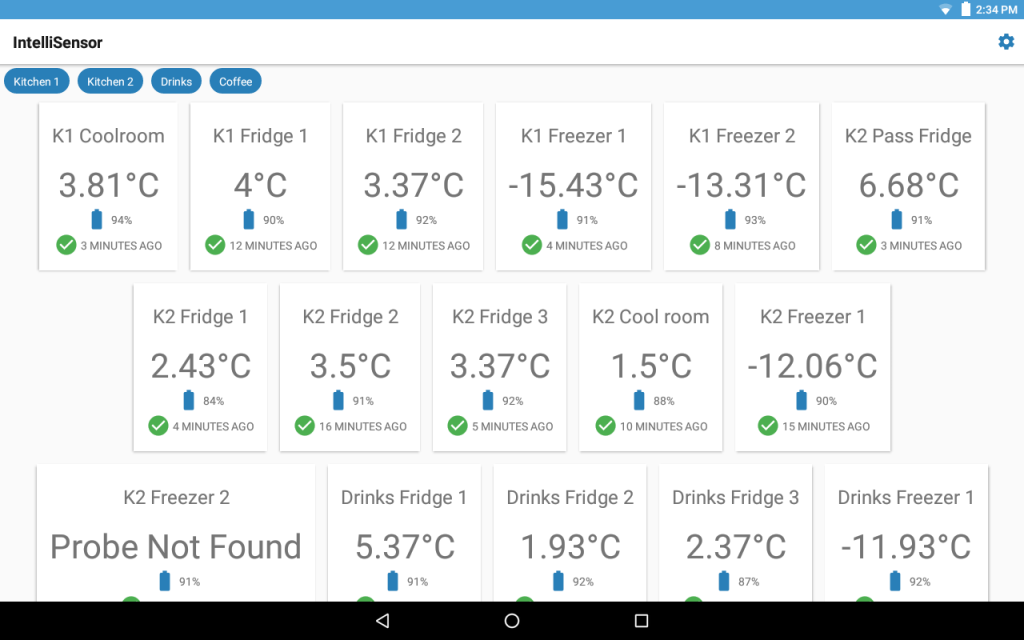 This is where regular monitoring can step in. EnviroChill’s products make the process fully automated, making your own job easier, but trusted staff can also do the work of checking the air and food temperature of cold storage units and recording the results. Documentation establishes patterns and expectations, as well as a digital or paper trail in case of an inspection. It’s also much easier to detect when something goes wrong, and you can then take the steps to fix it.
This is where regular monitoring can step in. EnviroChill’s products make the process fully automated, making your own job easier, but trusted staff can also do the work of checking the air and food temperature of cold storage units and recording the results. Documentation establishes patterns and expectations, as well as a digital or paper trail in case of an inspection. It’s also much easier to detect when something goes wrong, and you can then take the steps to fix it.Reducing Food Waste
In Trinity’s experience, few businesses measure and manage their food waste – even when food is the most important part of the business. “If it can’t be measured,” she says, “it can’t be managed.” But keeping track of food waste doesn’t have to be complicated. One simple way is to record what customers are turning back uneaten in their orders. For instance, if leftover chips consistently turn up on customers’ otherwise empty plates, it may be time to rethink the portion size.
Reducing food waste may not seem such an obvious goal until you look at the statistics. A study done in 2016 through RMIT in Melbourne found that, on average, 40% of food purchases coming through the front door were coming out in the bin. And considering that it’s an average, some businesses may be throwing less food away, but others may be throwing away even more – up to 60% of their food purchases. That’s a lot of food – and money – that business owners are literally throwing away.
Trinity herself is passionate about reducing food waste, and does her best to minimise it in her own kitchen. While she composts, she also makes sure to use as much of the edible parts of the food as possible. She advises that cafes and restaurants do the same. In addition to saving food, you also have a chance to get creative with your menu. “Sit back and ask, how can I use this more efficiently?” she says. “How can yesterday’s overstock become today’s special?”
The food safety guidelines may be extensive, but as we learned with Trinity, there are steps you can take today to ensure that your food is safe and your waste minimal. You can look up EnviroChill on their website or on Facebook, or you can contact Trinity directly with your questions and comments.
Trinity’s Key Takeaways
- Keep your air vents and cold-room fan units clean, to keep them running efficiently and your food safe to eat.
- Whether manual or automated, keep track of your refrigerators’ internal temperatures to ensure they’re running smoothly and efficiently.
- Air temperature and internal food temperature are not the same; make sure to check the core temperature of food in addition to the surface temperature and air temperature.
- Don’t keep food trays with plastic wrap or baking paper on the top shelf by the fan unit – use a lower shelf.
- Keep track of your business’s food waste, and find ways to adjust portion sizes.
- Use as much of the food you buy as possible. Get creative with daily specials!
- Make sure to review food safety regulations and ensure compliance among all the staff
- Have the FOH and BOH staff switch roles for a bit so everyone is familiar with what everyone else does and can better work together as a team
9 August 2020, 9:28 am - 1 hour 2 minutesGet Social Media-Savvy How To Advertise Your Cafe Online
These days, it’s essential for even brick-and-mortar businesses to have an online presence. As social media is where a lot of people spend time online, it also helps to have a social media presence. But cafe and restaurant owners are chronically time-poor and busy enough trying to keep their business running smoothly day in and day out. How can we possibly find time for this?
Well, Kylie and Philip from Launch Online Solutions (Now Pink Lime Digital) are here to help. They’re the heads of a video and online marketing agency that helps businesses, mostly start-ups, beef up their online presence and audience reach. We spoke with Kylie and Philip to discuss some of their top tips for businesses who want to get online.
Get On Google Maps
The first, freest, most basic thing, is to register your business’s location on Google Maps. Having your business easily searchable on Google Maps is the easiest way to get free online advertising. Oftentimes, travellers and locals alike who’ve got a craving for coffee will search for a place nearby, and Google Maps is one of the most popular apps for this. If your business isn’t registered, then countless potential customers won’t be able to find you. Even if you’re just starting out, Google Maps comes with a ratings and reviews feature that some customers will choose to use, making it the easiest free advertising you can get.
Have The Basics
Going beyond Google Maps, it’s essential to have some level of social media presence. Kylie iterates again and again that Facebook and Instagram are the bare minimum social media essentials. Facebook has the breadth of reach and accessibility for the average consumer, and Instagram, with its focus on images, is a must-have for those in the food industry. People want to see pictures of your beautifully made meals and latte art.
It’s also essential, Kylie emphasizes, to have at least a basic one-page website containing all the relevant information a potential customer might ask for. These days it’s super cheap and easy to create a website, and no complicated embellishments are necessary. Cafes and shops that sell things in-store can get extra benefits from a website, as it becomes another platform on which to sell their products.
Develop Your Online Image
No matter how great you think your business is, customers have a lot of cafes and restaurants to choose from. They won’t necessarily go to your establishment just because you think they should. “It’s about adding value to your customers,” Philip says. Customers ask, “How are you adding value to my life?” Good marketing is all about answering this question to their satisfaction.
But it’s not so simple as just setting up an Instagram account and posting away. As with all marketing channels, it needs to be strategic. First of all, it helps to hire a professional photographer, or at least enlist the help of a talented staff member. The key is to have someone a little bit on the outside, with an eye for good shots, and an ability to create beautiful, authentic photos. Unfortunately, in most cases even the latest iPhone camera simply won’t do.
The next thing is to maintain consistency in your profile. This can range from the colour scheme to selected filters to the order in which posts go live. A unified thematic consistency helps clearly communicate what your business is about and may directly affect the kind of customers who walk in your doors – and who never shows up. This consistency applies across all social media; having a different colour scheme and logo between Instagram and Facebook will only confuse customers and, once again, serve mainly to turn them away.
Shoot Some Videos
Visual media has become plentiful and prominent in the digital age, and video even more so than photographs. It’s the fastest-growing medium of communication, and YouTube is these days one of the leading search engines. In 2020, roughly 80% of content passing through the internet will be video. “If you’re not using video,” Kylie said, “You’re not gonna get seen.” Don’t just post any old video, however: create something that tells a story and connects with the audience. Video benefits even moreso from a professional, or at least access to professional equipment and not a simple phone.
This leads us again to the original question: how can I find time for this? Well, the good news is that you don’t need to post weekly, or even monthly. Kylie and Philip recommend planning content out at least three months in advance, as things often change throughout the year, which might make a post planned far in advance odd or inappropriate. It really helps to plan ahead, and take some time out of every month, say, to brainstorm ideas and plan out the posting schedule. It often helps to get the team involved, as they may have some ideas of their own.
Of course, you can always use a service like Pink Lime Digital. Good marketers like Kylie and Philip want the client’s input, so it’s good to have some idea of what you want to communicate about your business.
Social media has only grown since its first inception, and businesses who continue to cast it aside will likely get left behind. Both locally and globally, companies that connect with their customers online often see that engagement translate offline. Whether you hire some marketing experts or do it all in-house, it pays big-time to have a social media presence.
With over 15 years marketing and sales experience, Phil Im has grown some of Australia’s biggest brands in the retail, online and multi-level-marketing industry. He also likes bad 80s rap music but we try not to hold that against him.
Kylie’s 10 year history in Coaching and online branding world means she knows what it takes to build a successful business from scratch. From video snippets to funnel design, Kylie knows how to get your customers attention, fast. You can find out more via their social channels or visit their new website at https://www.launchonlinesolutions.com/
You can also get in touch with Kylie and Philip via email at [email protected]
Kylie and Philip’s Key Takeaways
- Make sure your business is registered on Google Maps – it’s the easiest way to get some free advertising.
- Facebook, Instagram, and a basic one-page website are the bare essentials for a decent online presence.
- When posting on Instagram, be sure to include hashtags – this makes your posts findable by users who aren’t following you, and thus increases your reach.
- You don’t need to post on social media every day, but do it on a regular basis – ideally three times a week – to ensure consistent customer engagement.
- Think before you post: is it consistent with the other posts on my page? Will this communicate a value-add for the customer?
- Video content helps create a story and connect your business with potential customers.
- No time? No problem: schedule posts ahead of time when you can.
- As a local business, you can take advantage of local events as an opportunity to engage with customers and potentially bring more in.
- Don’t do it yourself if you can help it: enlist the help of some professionals, or at least a savvy employee, to put together your social media portfolio.
30 November 2019, 12:55 am - 50 minutes 2 secondsJosh Clifton on Keeping Good Staff – The Customer Experience – Your Business Motto
We here at Hospitality Talk have spoken with a lot of movers and shakers within the industry. Now we’ve finally sat down and recorded one of our many fruitful conversations, this time discussing Josh’s new book and some of the most important points that have resonated with Peter and fellow leaders in the hospitality industry.
Josh’s book, The Hospitality Survival Guide: How to Survive and Thrive in the Hospitality Industry, delves into topics that originally inspired the podcast in the first place. Running a café comes with certain sets of challenges that may not be discussed enough within the industry. Staffing and leadership issues are not unique to hospitality, but the nature of the business calls for unique solutions.
Find and Keep Good Staff
 One of the biggest challenges in hospitality is finding and retaining good staff. While every café, restaurant, and bar offer a product, the experience is rarely complete without face-to-face interaction with the customer. Customers come to a café not just because of the coffee, but also because of the particular atmosphere that allows them to relax and enjoy themselves – and service plays a big part in that. In order to interact with customers effectively, Josh says, “We need to encourage people to be the best version of themselves.”
One of the biggest challenges in hospitality is finding and retaining good staff. While every café, restaurant, and bar offer a product, the experience is rarely complete without face-to-face interaction with the customer. Customers come to a café not just because of the coffee, but also because of the particular atmosphere that allows them to relax and enjoy themselves – and service plays a big part in that. In order to interact with customers effectively, Josh says, “We need to encourage people to be the best version of themselves.”The key to this is in identifying the strengths, weaknesses, and passions of each staff member. Management and team leaders can then find ways to support staff, whether that’s through focusing on their strengths, honing new skills, or supporting their projects and passions that take place outside of work. “It’s an obligation and a duty.”
While one can identify some of these traits in an interview, it takes time to really get to know people, even if you work with them every day. One way to do this is through meetings. Meetings are a time to discuss the wins and losses, share successes and concerns, and for staff to get to know each other. Just like with personal relationships, it’s vital to catch up with employees every now and again to build and reinforce the relationship. And in the hospitality industry, good relationships between staff and management are as important as those between staff and the customer.
Attitude
Josh hires on attitude before skill sets, based on his belief that attitude is fundamental. “It’s much easier to work on skills than attitude,” he says. If someone doesn’t have quite the right skill set for the job, “a skill can be taught.” From his own experience, Josh acknowledges that it’s a lot harder to change somebody’s attitude than to teach someone new skills. Someone with the wrong attitude, no matter how skilled they are, is likely not going to get along with their colleagues. This often creates long-term interpersonal problems within staff that are difficult to resolve. Someone with the right attitude is more likely to want to build that skillset and become a better team member.
Craft a Business Motto and Customer Experience Promise
Another way to rally employees together is to come up with a business motto, and swear by it. This motto would be the kind of thing that’s put up in a place where staff can see the message every day, and managers as well as staff have to buy into it. If the leadership isn’t following the business motto, then staff members have little reason to, either.
It’s also important to define the customer experience promise. This promise outlines the expectations customers will have during their experience, as well as what is expected of the customer. The word “promise” is very deliberate here, implying a level of trust and agreement between the two parties. It creates accountability not just between management and staff, but also between staff members. As with the business motto, it’s vital for everyone, from the owners to the dishwashers, to follow through with that promise.
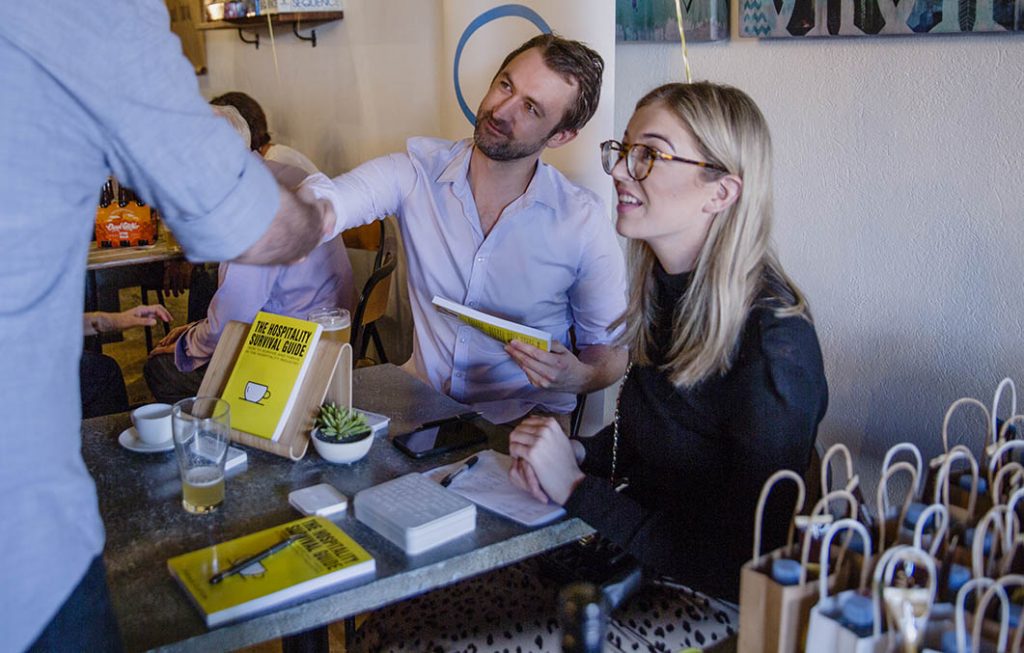
The hospitality industry is a tough one to get into. Josh created the Australian Café Owners Association in order to provide the much-needed support in an otherwise ultra-competitive, volatile industry. It was the entire purpose behind the book and the podcast, to share experiences and information with people to help them succeed. These tips and more are all present in the book, which is available now.
Go to Josh’s website, https://www.masterhost.com.au, and you can get the first four chapters of Josh’s book free if you hit subscribe. Or order the entire book in the website’s shop, on Amazon, or on Book Depository. You can also find it at a bookshop near you.
Josh and Peter’s Key Takeaways
-
Everyone’s got a book in them, whether it’s a story, passion, or wealth of knowledge to share.
-
Look for employees with the right attitude for your establishment – it’s much easier to teach new skills than to change somebody’s attitude.
-
Regular meetings strengthen staff relationships and cohesion; focus on the successes as well as the challenges.
-
Support employees in whatever their passions and strengths lie, even if it’s not strictly related to the job. If they feel supported at work they’re more motivated to do a better job.
-
Role-play ideas with staff to rehearse how to deal with customer, team, and supplier problems.
-
Outline a clear business motto, and be sure to live by that motto so that employees can follow your lead.
-
Create a customer experience promise, outlining what both staff and customers should expect when at your establishment.
13 November 2019, 4:58 am -
- 33 minutes 28 secondsSouthland Merchants: Bringing “The Flavours of the World” from Brazil
Andre Selga and Nadia Moreira have been in the coffee business for a decade now. After establishing connections with friends and farmers in Brazil, they brought their business to Australia in 2017 to break into the specialty coffee market. They call themselves “coffee hunters,” always in search of the best bean to make that perfect cup of coffee. They have built their business on connections and mutual education with the farmers they work with. So far, the results have proven to be successful. We sat down with the couple to find out more about their coffee sourcing process and how they support farmers back home.
Brazil has been a major coffee producer since the 19th century, but it wasn’t seen as a source of specialty coffee for a long time. Andre and Nadia have been working on changing that, and they’ve started to see that change. “Brazil can deliver all the flavours of the world at once,” Andre says. He argues that Brazil is well positioned to supply the growing demand for specialty coffee. The agricultural techniques, landscape, and diverse microclimates in Brazil are all optimal for creating a variety of specialty coffees. And Andre and Nadia have been at the forefront of developing this specialty coffee and bringing it to Australia.
Andre and Nadia have maintained close ties to their home country, and often travel back and forth to interact directly with farmers. They have a team back in Brazil that participates in the market, getting to know the other farmers and traders in the business. “That’s how everything starts,” Andre says. “With the connection.”
Making the Connections
The farmers they connect with want to improve their crops. These farmers, who are seeking more knowledge, improving their techniques, and trying out new ways to optimize their crops in terms of avoiding pests and improving nutrition, tend to produce the best coffee.
Andre and Nadia’s tasting process is rigorous, cupping ten cups of coffee for each potential trade partner. The cups may be far from perfect, but the farms with the most potential produce exceptional flavours that can be brought out more with an optimized growing process.
When they find these promising farmers, Andre and Nadia offer a better price for the specialty coffee that they produce – at least three to four times that of other offers. This price, Andre argues, helps these small farmers afford to harvest only the ripe cherries over multiple passes. Their above-market-rate pricing also enables farmers to improve their growing process and produce truly specialty coffee.
One producer they connected with produced only 15 bags of specialty coffee in the year they first made contact. Nadia assured their support, and the following year she produced triple the volume and Southland Merchants bought her entire stock. The start of this successful relationship, Nadia says, was the result of an open dialogue and established trust.
Providing Support Where It’s Needed Most
In Brazil, where good healthcare and education may be inaccessible in some rural areas, farmers are often not as well-educated as farmers elsewhere. This is where Southland Merchants has stepped in to help support coffee farmers advance their education not only about the crop that they grow but also how to run the business side of things.
As Southland Coffee Merchants becomes more established in Australia, Andre and Nadia have become more confident about their growers and the future of specialty coffee in Brazil. They have seen the children of coffee growers return to the farm to help their parents, and the specialty coffee market has continued to flourish. “Now they have an opportunity to earn money in the industry,” Nadia says.
Meaningful Work
This career of coffee hunting is extremely meaningful for the pair. The greatest meaning, Andre says, comes from the connections they make with other people, and not only teaching, but learning from them, as well. “I think it’s a both-way learning process,” he says, “which brings a lot of joy to what we do on a daily basis.”
You can find Andre and Nadia on Instagram under the handle @southlandmerchants. Follow them for a series of videos on local coffee growers talking about their livelihood and the coffee growing experience.
Andre and Nadia’s Key Takeaways
- Knowing the region from which your coffee is sourced, and especially developing connections with producers in the region, will help inform you of the market and any latent potential there.
- Providing support to quality producers, whether through offering the best price or through educational feedback, will likely lead to better product.
- When considering a new vendor, a rigorous tasting process may help you make the most informed decision.
- Good coffee production involves a variety of factors – climate, pest control, soil nutrition, and people.
- Connections – with producers, roasters, and consumers – all help create a feedback loop that helps produce the best coffee.
- Working with coffee producers is a two-way learning process – you can learn as much from them as they can from you.
7 October 2019, 5:49 am - 42 minutes 40 secondsTyrone Ho On Setting Up Your POS System
These days, lots of experts recommend that restaurants and cafes install point-of-sale (POS) systems. As technology has advanced, more and more cafes and restaurants are using POS systems to manage transactions, payroll, and inventory. With all the different functions that a POS system can serve, it’s become a must-have for a majority of the hospitality industry.
Tyrone Ho, from Redcat POS, has been in the business for quite some time, so he knows exactly what cafes and restaurants might want out of their point of sale. We talked with Tyrone about how a POS system can best serve the hospitality industry.
What are Your Needs?
First of all, Tyrone says, consider the needs and goals of your establishment. Are you a small hole-in-the-wall café, or do you own multiple locations? Would you prefer your POS system be an all-in-one deal or would you rather have different functions handled separately? Do you have plans to grow your business in the next year or so? Depending on how you answer these questions, you may want to invest a particular kind of POS system.
Invest in Good Hardware
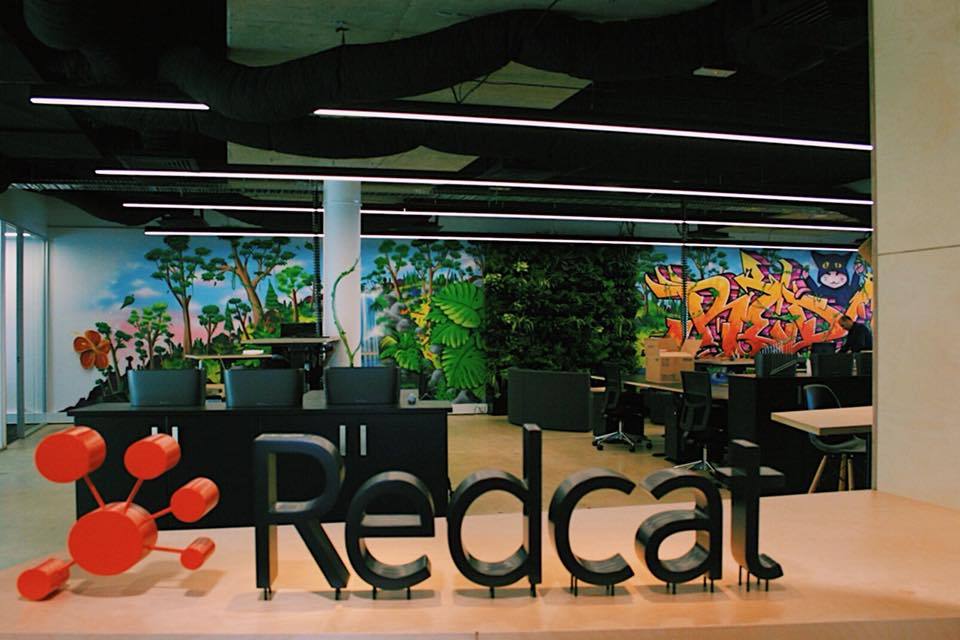
Tyrone advises café owners to avoid going for the cheap options. You want to invest in a good POS system up front, and that includes all the hardware. In the hospitality industry, where you’re making hundreds of transactions a day, you need some really robust hardware with touchscreens that can withstand a great deal of tapping and hammering. Sure, you can buy a touch-screen computer for a few hundred dollars at your local retailer, but these computers aren’t designed to be pressed a few hundred times a day for five years – or even three, for that matter. Good hardware will cost more, but it will last a lot longer, making the investment well worth it in the end.
Keep Your Connection Reliable
Another point to consider is the reliability of your Wi-Fi connection. Using tablet computers as your point-of-sale hardware are all the rage these days, but this setup won’t work for everyone. Using tablets, you end up relying a lot more on Wi-Fi and cloud storage, and this connection isn’t always stable. It may sound old-fashioned to recommend using a data cable for stable internet connectivity and computer monitors for your hardware. But the thing is, Tyrone notes, your hardware needs to be able to withstand a beating, and iPads don’t exactly hold up to snuff in that regard. And a secure internet connection will ensure that your system is always running smoothly.
However, that’s not to say tablet-based POS systems don’t have their place. If you’re a hole-in-the wall espresso bar that basically sells coffee and maybe five other items, these POS systems have all the functionality that you might need. They all can ring up orders, keep track of purchases throughout the day, and maybe even serve some accounting functions, as well.
Keep Your Data Secure
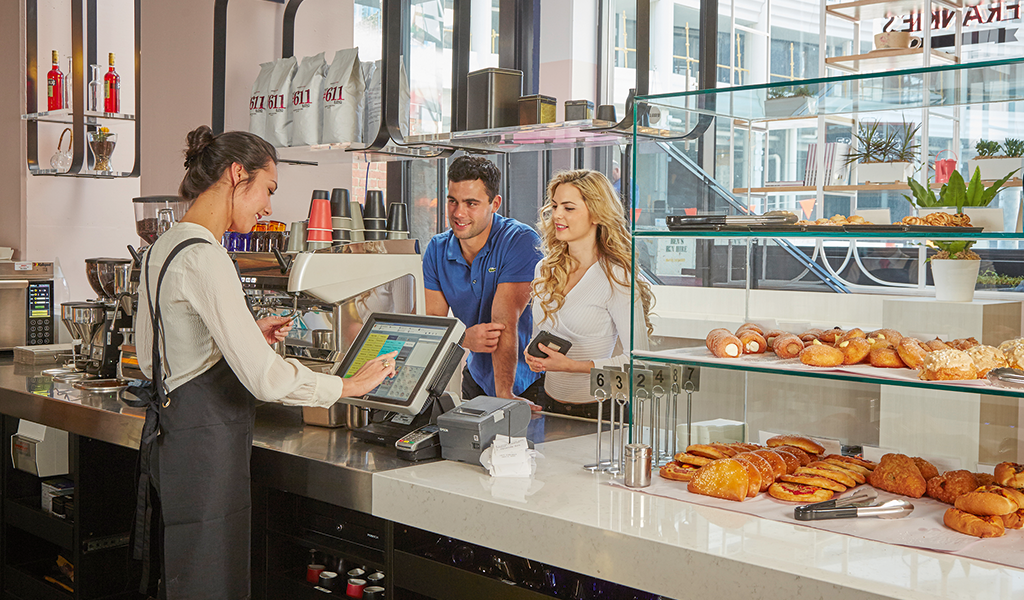 POS systems can do just about everything business-related these days. In addition to ringing up orders, they can handle your accounting and payroll functions, keep track of inventory, and even integrate a customer loyalty program. With all this data that your business generates on a daily basis, you need ways to back it all up. Traditionally, Tyrone says, there are two levels of data backup. The first level is located at the front of house, where the terminals are located, and backups are placed in between so if one goes out, the whole system doesn’t come crashing down.
POS systems can do just about everything business-related these days. In addition to ringing up orders, they can handle your accounting and payroll functions, keep track of inventory, and even integrate a customer loyalty program. With all this data that your business generates on a daily basis, you need ways to back it all up. Traditionally, Tyrone says, there are two levels of data backup. The first level is located at the front of house, where the terminals are located, and backups are placed in between so if one goes out, the whole system doesn’t come crashing down.The other level is at the back of house, where you have two options. You have it locally installed, where your backups would be stored on a PC or in-house server. Or, you can save it in the cloud. Unlike the traditional method, you can access these backups anywhere you have an internet connection.
Special recommendation: Start a Customer Loyalty Program
If you don’t have this already, Tyrone strongly recommends a customer loyalty program, which can also be integrated with a decent POS system. A long-term customer of his instituted a program where if you bought a lunch over a certain price, you’d get a free coffee. This paid off because often, the person who bought an expensive lunch to get that free coffee may also get a banana bread or muffin to go with it – adding further to his sales. You can also use these loyalty programs and apps to find out and cater to your target demographic. If you integrate it with your POS system, you can keep track of these data and adjust your promotions accordingly.
There are lots of possibilities with a good POS system, and you may find that the investment may be a money and time-saver in the long run. If you’re interested in learning more about Redcat, visit www.redcat.com.au or 1-300-4-REDCAT.
Tyrone’s Key Takeaways
- When picking out a POS system, consider your business needs – different systems cater to different needs.
- Pay for good hardware up-front, and you’ll be paying a lot less down the line.
- When buying hardware, consider how robust it is, as well as its sales reporting and security functionality.
- Also consider how you want to use your hardware – do you want it taking up counter space? Where do you want the cash drawer? Take these considerations into account for your interior design.
- If you don’t have a very secure Wi-Fi connection, run a data cable through your system to ensure connectivity reliability.
- Unless you’re a small establishment, an iPad-based system may not provide the functionality you need.
- But if you want to institute mobile ordering, investing in an iPad or two will do you well.
- If you want to access your business’s data anywhere, back it up with the cloud. Then you can pull it up wherever you have an internet connection.
- Consider linking up a CCTV system with your POS system for added security for your cash tills.
- If you haven’t already, set up a customer loyalty program – it’ll help attract customers, and integrated with a POS, cater to your target market.
5 October 2019, 7:54 am - 53 minutes 43 secondsEpisode 16 – Danny Andrade 2019 World Tea Brewing Champion
Talking Tea with Danny Andrade
In Australia, coffee is king, with cafes on almost every corner. Interest in tea, however, is growing. Danny Andrade, originally hailing from Brazil – itself a big coffee country – came to tea knowing hardly anything about it. Yet his transition to tea was so smooth, he recently won the World Tea Brewers championship. We spoke with Danny about his experience, how he got into the competitive tea-brewing world, and how tea compares to coffee.
The World Tea Brewers Championship
Training for the competition was not easy, Danny says. The world of tea has a wealth of different varietals and brewing methods, and the first test in the competition was blind. You need to have a solid knowledge of how different teas from different places compare to one another. In the end, Danny attributes his advancement to the second round as a spot of luck, as he was competing against others who had a much more extensive background in tea.
In the final round, however, Danny really shone, brewing a signature tea from three different varietals brewed separately, then infused with a bit of raw Brazilian honey. He also employed coffee-inspired methods, such as the use of a diffuser to add some extra aromatic ingredients such as orange peel. The result was a unique mix of flavours, and it clearly made a splash among the judges. Looking at photos from the competition, and hearing about all the steps that Danny took to brew the tea, the process seems like a science experiment. Combining the right amount of ingredients at the right time, at the right temperature, is indeed a science.
Danny didn’t just go from knowing nothing about tea to becoming a world tea-brewing champion overnight. It took some extensive training and preparation before participating in his first competition. When it came to tasting, he trained daily, searching for the subtleties in sweetness, acidity, and aftertaste that differentiated one variety from another. It also took some time to put together the plan for the winning brew, with careful examination of the primary characteristics of certain varietals and deciding how best to combine them.
Many of Danny’s competitors hailed from China and Japan, countries with a rich and long-standing culture of tea. However, such a tea culture hasn’t really caught on in the West, where most people’s experience of tea is of dunking dusty tea bags into hot water. “We don’t know sometimes if it’s real tea,” Danny says. He argues that tea is actually much like coffee. Like coffee connoisseurs, tea experts discuss elevation, pH, microclimates, varietals, brewing methods, and other factors that help make the best cup of tea.
But tea is not exactly like coffee, and it’s not just in the part of the plant that’s harvested and brewed. The biggest difference? The age for the perfect tea. In the coffee world, a producer can wait five to ten years to get the best bean for a brew. In tea, however, that wait time extends to at least sixty years: an entire lifetime for a high-grade cup of tea! Danny has even made teas from century-old varietals such as Ya Shi Xiang.
Danny advises newcomers to the world of tea to forget about tea bags and start with tea leaves. This is how tea-drinking cultures consume tea, and it’s the best way to evaluate the quality of the tea. Your local supermarket is unlikely to house high-quality tea, so search for specialty shops and ethical sources. Better yet, get in touch with producers directly. But it’s not just about the tea leaves themselves. Discuss brewing methods, the water temperature, and the different tastes of different teas.
The next step, whether you’re a consumer or an owner of a café looking to branch out into tea, is to brew your own tea. Even with a high-quality varietal, it may take some time to brew the perfect cup, as tea brewing largely remains a manual process. Start with the recommended method, and feel free to experiment by adjusting temperature, the amount of tea brewed, or adding extra ingredients to infuse with it. And, if you’re interested in even more in-depth research, visit the countries where tea is a long-standing tradition to experience truly well-made tea and interact with experts.
Despite the fact that tea is one of the oldest continuously consumed products in the world, it remains largely unexplored territory in Australia. More and more people like Danny are discovering the immense possibilities of the drink and trying out some new things with it. And, thanks to the advent of the internet, the information is out there. It’s never too late, or too early, to embark on your own tea journey.
Danny can currently be found at 3Brothers Coffee, where he works as a relationship manager.
Danny’s Key Takeaways
- Want to develop your own taste buds? Train every day – sample the coffee, the tea, the food, and think carefully about how it tastes.
- Follow your own star, and your own instincts. Overthink a decision and you may lose a golden opportunity.
- Work out a good morning routine: drink water first thing in the morning, and try not to check your phone until an hour after waking up.
- If you want to learn more about tea, speak to people who are experts and experienced with the drink, whether you find them online or in-person.
- Everyone you meet has something to share with you. Listen to them, collaborate, and share knowledge.
- Whether it’s professional or personal, focus on building and maintaining strong relationships.
- The internet is an amazing tool, but be sure to take a step back sometimes and respect the moment.
30 August 2019, 2:53 am - 1 hour 18 minutesEpisode 15 – James Henderson on How to Build a Better Hospitality Experience
James Henderson on How to Build a Better Hospitality Experience
James Henderson has added a lot of titles to his name: podcast host, hospitality innovator, consultant, speaker, and even accidental festival owner. He’s pretty much done it all in the hospitality industry, having worked in bars, restaurants, and hotels. On his podcast, Hospopreneurs, James has interviewed several big names in the industry, including Janine Allis and Phil DiBella. We talked to James about his full-circle experiences in the hospitality industry, from his time as a blender cleaner at Boost Juice to interviewing the founder on his podcast, and his tips for aspiring and struggling business owners.
Building a Better Hospitality Experience
Many bars, cafes and restaurants struggle: first with getting their name out there, then with building and maintaining customer loyalty. To start, focus on providing great products and great service. But it’s about more than just the food and drinks. Hospitality, James says, “engages all five senses.” It’s about the experience – visual, auditory, tactile, and olfactory – that the customer gets when they walk into an establishment. Whether it’s scent of Islay whiskey in a dark mahogany bar, or a bright café perfumed with herbal scents, the immediate sensory experience should attract customers, and tell them what your establishment is about.
The staff also helps complete the experience, for better, and for worse. Staff that welcome guests the moment they walk in, projecting an attitude of positivity and enthusiasm, will be passing it on to the customers. A lack of enthusiasm may do the opposite – or at least discourage any first-timers from visiting again.
Develop a Dedicated Staff
James has devised one simple method of testing his staff’s level of enthusiasm: high fives. If he offers up something as simple as a high five, and they can’t work up the energy to do more than a low five, it reveals to him that they’re not super committed to their role, and they probably don’t want to be there. If you’re not much of a high-fiver, you can develop your own simple metric to gauge individual dedication.
Not everyone, of course, comes into the job with the same level of enthusiasm. And, when things get busy or get tough, you need to keep up the morale so the staff can successfully manage. James suggests boosting morale by listening to staff, whether it’s their complaints, criticisms, or suggestions for solutions to a problem. Listening to staff and implementing their ideas empowers employees, making them feel like they have an influential role in the business. If they have an influential role, then they become more invested in the business’s success. Of course, this kind of advice goes well beyond hospitality, and can help make any business successful.
What Makes a Good Leader
 Good leaders aren’t just always learning – they’re also helping their staff learn and grow, too. Even if, in the end, a valuable staff member ends up leaving your establishment down the road. Help teach your staff how to work in a new role that would be the next step up in their careers, and find out what it is that they really want to do. “Your job as a manager,” James says, “Is to give people fulfilment in their career,” not to pigeonhole them into a certain role.
Good leaders aren’t just always learning – they’re also helping their staff learn and grow, too. Even if, in the end, a valuable staff member ends up leaving your establishment down the road. Help teach your staff how to work in a new role that would be the next step up in their careers, and find out what it is that they really want to do. “Your job as a manager,” James says, “Is to give people fulfilment in their career,” not to pigeonhole them into a certain role.This sort of good leadership also helps create other leaders. Training staff for new roles, then training that staff to teach newcomers, creates a mutually beneficial cycle of teaching and learning that will continue throughout their careers. You also may learn a new thing or two yourself. James has always been open to learning something new, and that openness to new experiences will help make anyone become a great leader.
Hospitality and Technology
In addition to an interest in hospitality and music, James also has an interest in technology, dating back to his involvement in a start-up that developed a rewards app for bars. He sees exciting things happening in the hospitality industry as a result of this technology. The proliferation of data on both customers and venues will likely help enable both parties to really know what they’re getting into from the start. On the low-end side of hospitality, service is likely to get more efficient and automated to keep costs low and quality consistent.
Despite the trend towards automation, James doesn’t see the human side of hospitality going away anytime soon. “I think that the bespoke creative nature of the industry will remain intact,” James says, “And you’re going to get human-driven experiences that will be more valuable.” It will always be important for humans to connect with one another, even across transactional relationships like those at bars and restaurants. Great people are the secret sauce for any great experience.
The most important thing to know when entering the hospitality industry, according to James, is understanding people. ” You need to understand human behaviour,” he says. “And understand the industry enough so that you can predict what customers want before they ask for it.” That understanding and connection, even if it’s over a few seconds or minutes, will ultimately make the difference for the customer.
Check out James’s Hospopreneurs podcast, or contact him for audio production services to market your hospitality business.
James’s Key Takeaways
- Always be open to learning something new, and to new experiences.
- Listen to people – you’ll never learn and grow if you don’t listen.
- Check out Simon Sinek’s book, Start with Why – or at least his TED talk on the subject.
- Consider the entire experience, from beginning to end, from the food to the staff interaction, when making changes to your establishment.
- Empower your staff by listening to their feedback and suggestions for improving the business.
- As a manager, it’s your responsibility to help your staff progress in their careers and transition into new roles.
- No matter how busy your schedule is, always make sure to take time out of your day to relax and think about things.
30 August 2019, 2:52 am - 24 minutes 36 secondsEpisode 14 – Justine Schofield on What She Looks for in a Good Restaurant
Keep It Simple: Justine Schofield on What She Looks for in a Good Restaurant
When starting a café or restaurant business, being able to stand out and attract customers is the most important thing you want to achieve. After all, if customers don’t come, you’ll have to close your business. But it’s not easy when customers have so many cafes and restaurants to choose from on a single city block alone.
You don’t necessarily have to attract a whole bunch of customers at once, however. As long as your product and service are good, your first few customers will tell the people they know how good it is, and more will come. If you’re lucky, you might also end up with a celebrity endorsement, which will surely boost your numbers. And what might a celebrity chef look for in a restaurant? We spoke with Justine Schofield, a former MasterChef contestant and host of the TV series Everyday Gourmet, to find out.
First and foremost, Justine says, make sure that whatever you decide to do, you do it well. She sees a lot of people these days opening up specialized restaurants with single offerings – such as an oyster bar that serves only oyster dishes, as well as fantastic food that’s often paired with oysters. If you do want to specialize in that single dish, it better be perfected beyond anything else that you could offer on the menu. If that dish is good enough, customers won’t care that you don’t have many items on the menu – in fact, they’ll come to you just to eat that one signature dish you have on offer.
Strive for Taste, not Picture-Perfection
With the proliferation of Instagram as a promotional tool for restaurants and cafes, it can be tempting to focus on how your food looks on camera. But your food can look fantastic and still taste horrible. Before it looks nice, Justine says, it’s got to taste nice. Eating out is about the experience and enjoyment of food, and if all that ends with the first bite, you’ve lost a customer.
It’s also fine if the food doesn’t look perfect. In fact. Justine doesn’t like it when a dish looks too perfect – such dishes can be overwrought and overthought. Good food doesn’t have to be fancy, or even just look fancy – as long as it tastes nice, the looks will follow. Sometimes, the simplest dishes are what win people over.
Watch Food Trends
If you’re looking to start a new restaurant, or possibly expand your business, have a look at what’s going on around you. Globally, Justine says, many food trends tend to start in Los Angeles and New York, then make their way overseas. Currently, for instance, she sees a lot of ramen noodle bars popping up. This, among other food trends, are coming for Australia.
But Australia isn’t just a follower. It can be a leader in food trends as well. Restaurateurs come from all over the world to Melbourne to look into the breakfast trend. “No one does breakfast like Melbourne,” Justine says, and people bring it back home. Here especially, the food doesn’t need to be overcomplicated. All you need for a good breakfast place can be the best scrambled eggs and the most incredible bread. Again, if the food is good enough, even if it’s a small, simple menu, the customers will come.
Authenticity also attracts customers. These days, people want to feel comfortable and at home in a good restaurant. Justine’s own show – now entering its seventh season – reflects this trend, as she demonstrates recipes with ingredients you can find at just about any grocery store. Most people don’t necessarily want a rare specialty when they eat out – all they want is to eat some good food in good company. As opposed to being overly aspirational or polished, a sense of attainability and relatability will draw people to your doors and to your menu.
Having your restaurant stand out in an already crowded industry isn’t easy. But it doesn’t have to be so complicated, either. If you stay true to yourself and your menu, you’ll find the customers you want.
You can follow Justine Schofield on Facebook, Instagram, and Twitter under her name, Justine Schofield. If you want to learn more information about Justine and what she’s been up to, you can visit her website, justineschfield.com.au. Her latest book, Simple Every Day, is available wherever fine books are sold.
Justine’s Key Takeaways
-
Listen to your mother – she might just have the best advice you can get.
-
As Justine’s own mother told her, stay true to yourself.
-
Don’t overthink how your food looks or your ingredients list – sometimes the simplest is the best.
-
If you want to specialize in a particular dish, do it well.
-
Before thinking about how your food looks on Instagram, perfect the taste first.
-
Check out the book The Flavour Thesaurus if you’d like to experiment with your own recipes.
-
If you want to do some simple, easy cooking at home, look for Justine’s book, Simple Every Day.
-
Never underestimate a good set of scales.
-
If you’re up for it, give the world what Justine says it’s missing: a decent Béarnaise sauce.
2 April 2018, 2:42 am -
- 35 minutes 24 secondsEpisode 13: Carley Byrnes – Insuring Your Café or Restaurant : What You Need to Know
Business Essentials: What You Need to Know About Insuring Your Café or Restaurant
They say that only two things are certain in life: death and taxes. When it comes to doing business, we can add another item to the list: insurance. These days, it’s a necessary chore, but many business owners don’t find the topic very interesting or pleasant to talk about.
Contrary to popular belief, some insurance companies out there honestly do want to make things easier for their clients. One such company is WFI Insurance, and we spoke with regional manager Carley Byrnes, who focuses primarily on hospitality insurance for their office in Sydney, about how to navigate insurance.
Invest the Time and Research
 Business owners in the hospitality industry often lead busy lives, and opening up a new business can be particularly stressful and time-consuming. So when it comes to insurance, most people just do it over the phone and want to get it over with as quickly as possible. Carley says this is not a good way to go about it. If you invest some time into research and money into a good policy right at the start, in the long run it may pay off – especially if you have to make an insurance claim in the future.
Business owners in the hospitality industry often lead busy lives, and opening up a new business can be particularly stressful and time-consuming. So when it comes to insurance, most people just do it over the phone and want to get it over with as quickly as possible. Carley says this is not a good way to go about it. If you invest some time into research and money into a good policy right at the start, in the long run it may pay off – especially if you have to make an insurance claim in the future.Most café owners don’t know much about insurance going in. And insurance isn’t the most exciting topic. But it’s necessary to review your coverage thoroughly so you know what incidents you can file claims for.
Establish Good Relationships
To establish a good relationship with your insurance company, get in contact early on, and connect with someone that will know your business. An insurer focused on hospitality, and a manager who knows your business in particular, will make things a lot easier for you in the long run.
Keep up with Business Growth
Many business owners in the hospitality industry also don’t keep up with their business growth. As your business grows, your insurance policy needs may change. Carley recommends reviewing your insurance policy when it comes time for the annual renewal, and speak with your insurance manager about whether you need to make any changes to your existing policy.
Get Fire Insurance…
You can cover your business for lots of different things, but Carley strongly recommends businesses to cover two main areas. Insurance for fire and weather-related disasters is a must – especially in the hospitality businesses, where kitchen fires are a known hazard. Fires also tend to put your business out of commission for days or even weeks on end, which can really affect your bottom line. Insuring for fires will better guarantee that you’ll be able to keep your business up and running long after the repairs are made.
…And Public Liability Insurance
The other category of claims Carley recommends covering for tend to be a bit complicated, and very messy if you find yourself not covered for it. Public liability insurance overs a wide range of accidents and incidents that your business could be held liable for. For restaurants and coffee shops in particular, where a lot of people come and go, accidents may happen, and in case someone sues for liability, coverage will come in handy.
Mind Your Neighbors
Why else is it important to have good insurance coverage? Well, unless your business completely stands on its own, anything that occurs in your business – especially fires or other such disasters – may affect your neighbors, as well. Places such as business complexes and shopping malls are keen to get things back up and running quickly, and good insurance can help ensure that.
Be Prepared
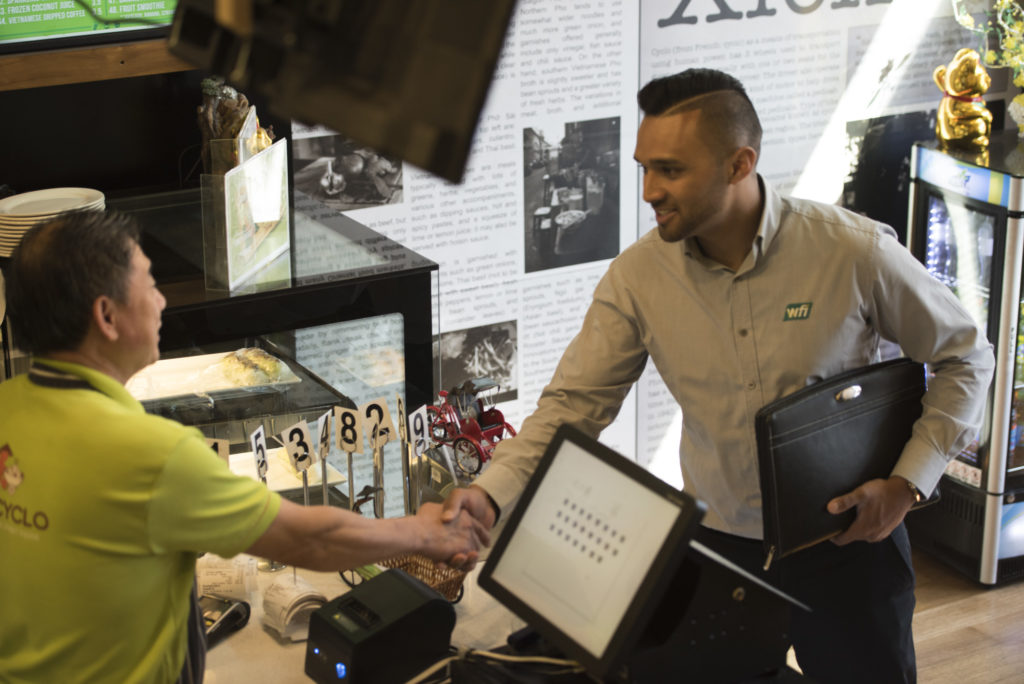 Shopping for a new policy can also be quite daunting for a new business owner in any industry. But searching for information these days is as easy as plugging search terms into Google, so go online and peruse the website. If it seems like a good fit, then ring them up for more information and a quote.
Shopping for a new policy can also be quite daunting for a new business owner in any industry. But searching for information these days is as easy as plugging search terms into Google, so go online and peruse the website. If it seems like a good fit, then ring them up for more information and a quote.If you already have a policy, you can have that on hand to make it easier for comparison, and the area manager will make suggestions to improve and refine it. If you’re a new business, get as much paperwork as you can together in terms of what your expected turnover is, how many employees you think you’ll have, cost of your fit-out, and so on in order to get an accurate insurance estimate.
Keep Records
Record-keeping is essential to ensuring that you get good insurance. Take photos of your establishment to record what items you have inside just in case you do need to file a claim, and retain receipts of all the items you purchase. Many of us don’t always do this, but while it’s not terribly likely to happen, nothing is impossible. So it’s always best to be prepared, so that when you file a claim, you know exactly what to claim for.
If you want to learn more about WFI Insurance, visit wfi.com.au and find your area manager. You can also contact Carley directly if you have any questions or comments.
Carley’s Key Takeaways
-
When speaking with an insurance representative, bring your paperwork – that way, you’re better prepared in case you have to make some changes.
-
Find an insurance agent who knows your business and knows you, as well. If you have a more personal connection with your insurer, you get more personal and prompt service, as well.
-
Don’t rush into a policy – review your policy before you buy it.
-
Take photos and video of your equipment and merchandise when you first sign up for insurance – that way you know what you have and the condition of everything well before you have to file a claim.
-
Make sure you’re insured for fire and public liability – the two most common insurance incidences you’re likely to have.
-
Insuring against machine breakdown is also a necessity for those in the hospitality industry – you don’t want to miss a beat just because something’s broken.
-
Put in as much time and effort as possible into finding out what your insurer actually covers, so that in the long run, you’ll save money.
-
Be mindful of your business neighbors – anything that affects your establishment may affect them, as well.
-
Engage in risk management when setting up your business – putting preventative measures in place such as CCTV may help lower your premiums.
-
As your business grows, evaluate your policy annually to see what coverage you need to add and drop.
1 January 2018, 7:11 am -
- 47 minutes 7 secondsEpisode 12 – Jordan Toft on The Keys to a Successful Kitchen
All About the People: Jordan Toft on The Keys to a Successful Kitchen
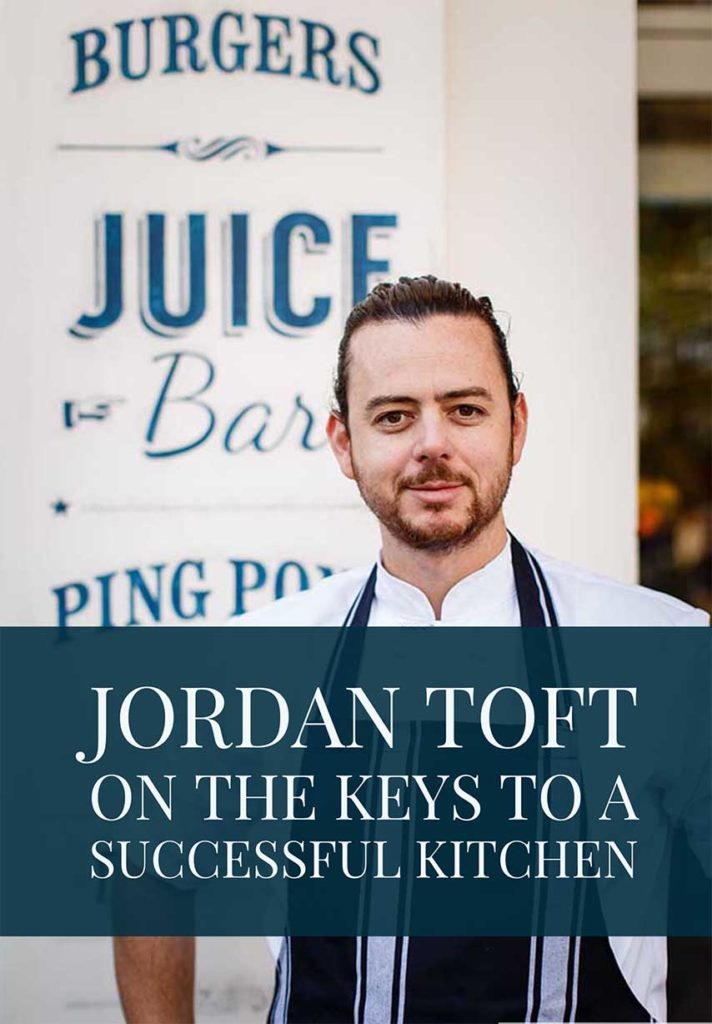 Jordan Toft has been in the cooking business for a long time: 20 years, in fact. He got his start at the tender age of 15 working in the Sydney Opera House kitchen, and has been working as a chef ever since. He’s also lived on three continents, working in restaurants located in France, Italy, and the United States. Over the years and across his travels he’s learned several key things that have helped him bolster his career, and he spoke with Slammed Hospitality Talk to share some of these nuggets of wisdom.
Jordan Toft has been in the cooking business for a long time: 20 years, in fact. He got his start at the tender age of 15 working in the Sydney Opera House kitchen, and has been working as a chef ever since. He’s also lived on three continents, working in restaurants located in France, Italy, and the United States. Over the years and across his travels he’s learned several key things that have helped him bolster his career, and he spoke with Slammed Hospitality Talk to share some of these nuggets of wisdom.When managing a kitchen, Jordan says, the most important thing to consider by far is relationships. In the hospitality industry, people are both the biggest assets and the hardest challenge. It’s not easy sometimes to keep the morale up in such a high-stress environment as a kitchen during the busiest hours of the day. But as we say, the hospitality industry is all about the people, so head chefs must lead by example and inspire their staff to do their best.
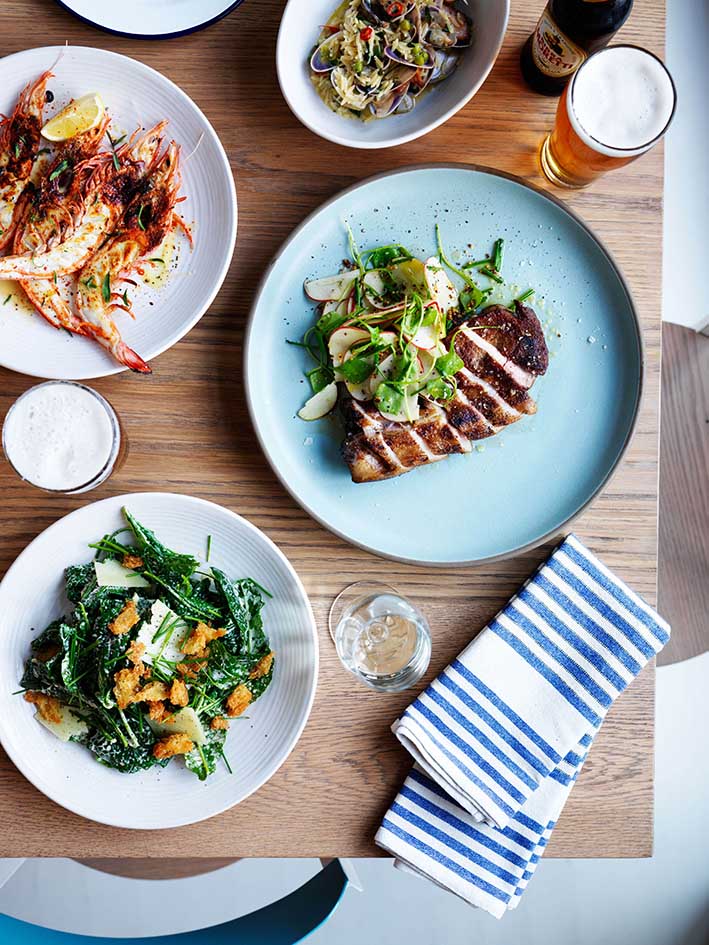 Fostering a sense of teamwork is paramount to boosting your restaurant’s success. Staff who feel like they’re a part of a team, and that they have some say-so in running things – whether they’re a sous chef, head chef or lowly line cook – will work better and give you their best effort. If everybody works better in the back of house, this will motivate the front of house, as well. And an overall better work experience will create a better customer experience.
Fostering a sense of teamwork is paramount to boosting your restaurant’s success. Staff who feel like they’re a part of a team, and that they have some say-so in running things – whether they’re a sous chef, head chef or lowly line cook – will work better and give you their best effort. If everybody works better in the back of house, this will motivate the front of house, as well. And an overall better work experience will create a better customer experience.These days, Jordan says, with so many flashy cooking competition shows, people might get the wrong idea about what it takes to be successful. Young people are not so much lazy as misunderstanding the amount of work it takes to achieve such levels of success. And unfortunately, many people can work hard for decades and not see the results they want.
Jordan advises young aspiring head chefs to take your time. Learn your craft – preferably for about ten years, as he did, focusing specifically on perfecting his cooking craft. He spent some time getting to know chefs that he respected, such as Peter Doyle, and learned as much as he could from them. He started young, so he could easily put concerns about money aside and focus purely on the craft of cooking. By his late 20s he was in a place where he could focus on climbing the ladder and striking out on his own.
As an older chef, he advises other veterans to give advice and guide young aspiring chefs so they can learn their craft and pass on their own industry knowledge. This is all a part of developing relationships with your staff so you have a healthy work environment. Hard work is necessary, of course, to achieve success as a restaurant, and costs can get high, but it’s important to remember that it’s not just about the money. It’s also about the craft and creativity that goes into making a great dish that people enjoy. Something as simple as pulling someone aside and telling them that they did a great job that day will help boost morale.
Of course, things will not always go so well, but Jordan only berates employees when they’ve done something wrong and underhanded – not when it’s an honest mistake. Gone are the days of employees enduring a boss’s tirade for hours on end and still showing up to work the next day. Now a good kitchen is run as a supportive environment to foster talent and teamwork.
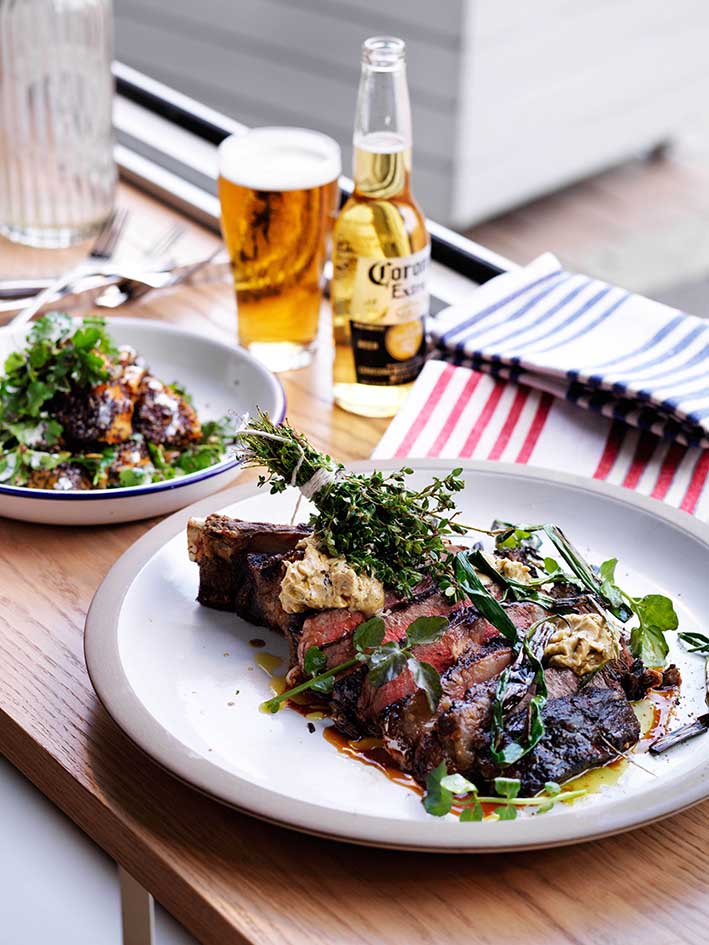 Organization is also key to running a successful kitchen. If all the staff and equipment are running smoothly, then you can better concentrate on creating great product. Organization ranges from managing how the cool rooms are to labeling and shelving food items and keeping equipment clean and up to par. If any hiccups occur in the kitchen, the whole system can be thrown off, and focus shifts to getting the system right again – not a good use of the kitchen staff’s energy. Jordan burdens a lot of the organization upon himself, especially for scheduling purposes, taking a top-down approach so there’s a clear sense of responsibility and accountability.
Organization is also key to running a successful kitchen. If all the staff and equipment are running smoothly, then you can better concentrate on creating great product. Organization ranges from managing how the cool rooms are to labeling and shelving food items and keeping equipment clean and up to par. If any hiccups occur in the kitchen, the whole system can be thrown off, and focus shifts to getting the system right again – not a good use of the kitchen staff’s energy. Jordan burdens a lot of the organization upon himself, especially for scheduling purposes, taking a top-down approach so there’s a clear sense of responsibility and accountability.It’s also important to keep in mind the creative side of food. Jordan specializes in running farm-to-table establishments, creating daily menus to reflect the availability and seasonality of the local food he was sourcing for the restaurant. The most successful restaurants in the business offer something a little more than just something to eat – a whole experience can often come packaged with it. Serve a great product, and the great experience will follow.
In the future, Jordan looks to open up another location of his restaurant, Coogee Pavilion, as well as focusing on his current ventures. If you want to keep up with what Jordan’s doing on social media, you can follow him on Twitter and Instagram at @jordanwtoft.
Jordan’s Ten Takeaways
-
If you’re a young aspiring chef, take your time to learn the craft. The opportunities will easily follow.
-
With kitchen staff in particular, building group morale is essential to run a successful kitchen.
-
Building relationships is key in the restaurant business – with customers, staff, and farmers if you source your ingredients directly.
-
Good organization will allow you to focus solely on the product.
-
Veteran chefs take note: just as young chefs should seek guidance and advice, you should be willing to give it.
-
Keep your menu balanced between your signatures and your mainstays to manage costs and keep prices reasonable for your particular restaurant tier.
-
Make sure you focus on your product – if the food’s not great, people won’t come back to your restaurant.
-
Young chefs should also keep in mind that it takes a lot of hard work to reach a certain level of success, and be prepared to put that work in. In the end, it’s all up to you, what you make of your career and success.
-
Even as a chef, consider the guest experience as well. Keep in mind that there’s no strict dividing line between the front of house and back of house.
-
Though creativity and craft will help you stand out, don’t lose sight of the numbers – you can have the most creative dishes around, but if you can’t recoup costs, your restaurant won’t last long.
11 December 2017, 10:45 am -
- 38 minutes 34 secondsThe Art of Success: Caleb Cha on Becoming World Latte Art Champion
Some would say that making the perfect cup of coffee is an art. As a matter of fact, there is an actual art to making coffee – latte art, that is. Using coffee as a canvas, latte artists make up a special breed of barista. Every year, competitions are held in Australia and around the world to showcase the best in this unique field. I sat down with the 2015 Australian and world champion, Caleb Cha, about his start in the field and his success.
Caleb didn’t start out with a passion for coffee. But once he arrived in Melbourne and took a job at a coffee shop, he started learning the art of extracting coffee. The more he learned, the more his passion grew. Eventually, he expressed that passion through latte art.
Melissa Caia, a teacher at the William Angliss Institute, first introduced Caleb to the art of latte design. One of his bosses also encouraged him to pursue this intricate artistic endeavor. He showed Caleb a particular pattern, and asked if he was able to do it. After a few tries, Caleb managed to produce the pattern, which turned out to be the 2008 world latte art champion’s winning design. Noticing Caleb’s talent, his boss urged him to start competing himself. That set Caleb down the road of learning and practicing latte art.
Even with all the hard work he had put into developing his skills, Caleb confesses that he still couldn’t believe that he had won the 2015 world championship. It hadn’t even been two years since he got into latte art. But over the course of seven weeks leading up to the championship, he worked on 14,000 cups of coffee. That’s a lot of coffee.
Caleb emphasizes the importance of staying calm. It takes a lot of focus and finesse to create award-winning latte art. But it can also get very frustrating. If you get frustrated while working, you might end up making more mistakes. Keeping calm while you’re at work will ensure that you maintain a steady hand and your art comes out the way you want it.
Working with such an evanescent art form, you should take photos of your work. Even when you’re just starting out, taking photos will help document your progress and can serve as a confidence booster. Sometimes Caleb admits that he would like to delete photos of his previous work, but he keeps them up as a testament to the progress he’s made.
If you want to get into latte art yourself, Caleb advises to first focus on controlling your hand movement all the way down to the joints. Considering how delicate latte art is, working on your fine motor skills is the most fundamental part of perfecting latte art. You can first practice with the simple designs of monk’s heads and hearts.
Once you’ve got a handle on those, you can start moving on to rosettas, tulips, and other more complex designs. Each type of latte art design requires various different motions and hand movements. For instance, a wiggling motion will help you make the perfect rosetta. Different angles and the size of the cup will also affect the designs that you can do.
Caleb claims that most of the different kinds of milks don’t affect his technique, with the exception of soy and almond milk. He finds these milks to be the most difficult to pour when working on latte art. But he’s managed to find a technique that allows him to work with these milks. He advises to steam soy milk for less time and to wait for ten seconds before swirling it and using it in your art. That way, it will be almost like working with whole milk.
All of this Caleb has learned on his own. Though he turned out just fine, he admits it would have been nice to have someone to really help him learn this very intricate skill. As a self-taught latte artist, he admits that he might’ve been able to progress much more quickly if he had had a mentor early on.
But the most important takeaway for Caleb? Don’t give up on something once you’ve started it. Even when things got difficult, Caleb told himself, it’s too early to stop. To this day he has yet to start something without seeing it through to the end.
Just as it is with any skill, latte art takes patience and practice. Whether you want to be a world champion or just have your lattes look nice, anyone can make great latte art. Who knows? You could even go from novice to world champion in the space of two years. With motivation and dedication, Caleb says, anything is possible.
You can find Caleb on Facebook under the name Caleb Tiger Cha, and on Instagram as @CalebTiger. You’ll see photos of his most recent work as well as receive updates on his whereabouts, workshops and events.
Caleb Cha’s Ten Takeaways
-
Be humble, reliable, and responsible.
-
If you want to get into latte art, or really any aspect of the coffee industry, find someone who can give you good advice.
-
If you want to work on achieving something, there’s no better time than now.
-
Read as much as you can about the coffee industry – the ASCA website is a good place to start.
-
When working on latte art, stay calm and keep your frustrations in check.
-
Controlling your hand movements and perfecting your fine motor skills will help you make great latte art.
-
If you’re a café owner, you can motivate and encourage talented and interested employees into pursuing latte art. It may help bolster employees’ skills and your business as well.
-
No matter the milk or machine, great latte art is possible with the right techniques.
-
If at first you don’t succeed, try and try again.
-
Once you start something, don’t give up until you see it through.
6 August 2017, 5:38 am -
- More Episodes? Get the App
Your feedback is valuable to us. Should you encounter any bugs, glitches, lack of functionality or other problems, please email us on [email protected] or join Moon.FM Telegram Group where you can talk directly to the dev team who are happy to answer any queries.
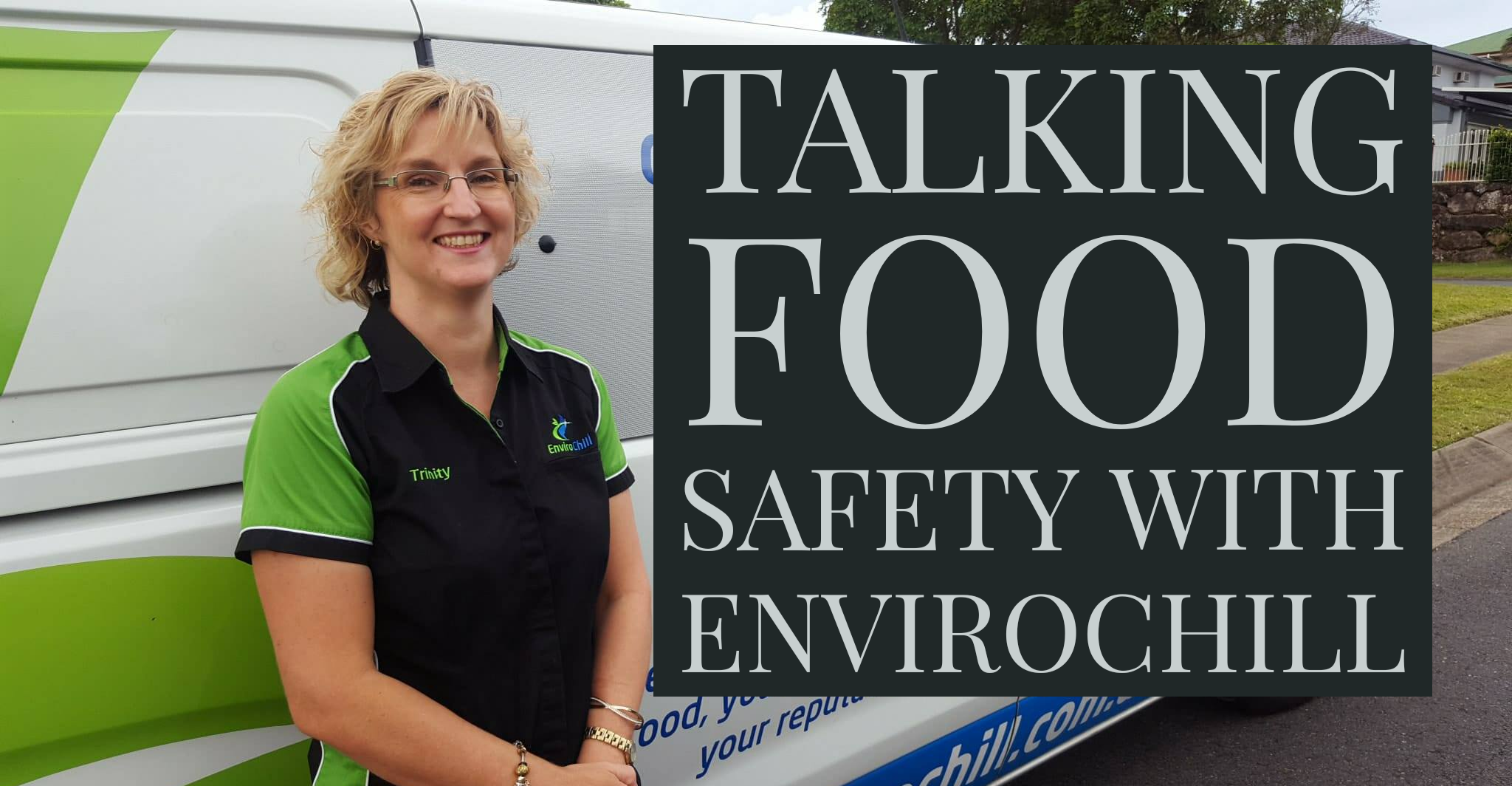

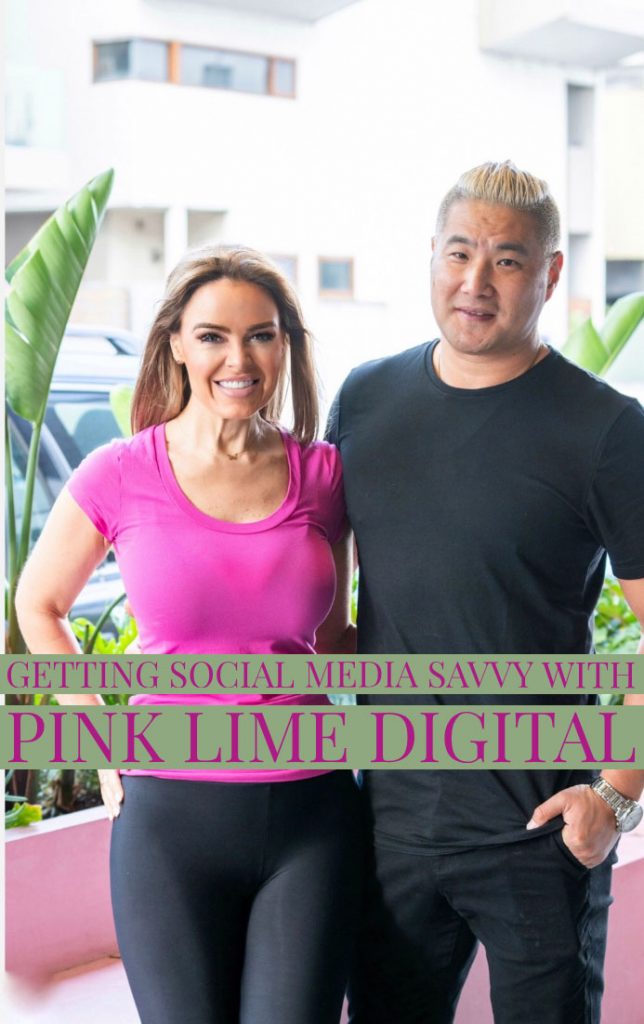
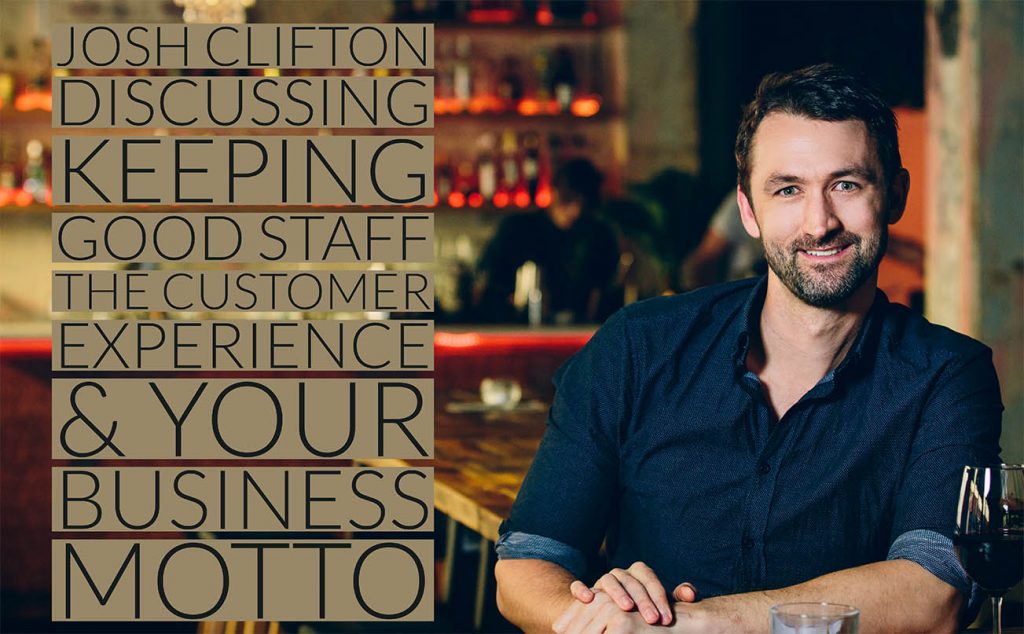
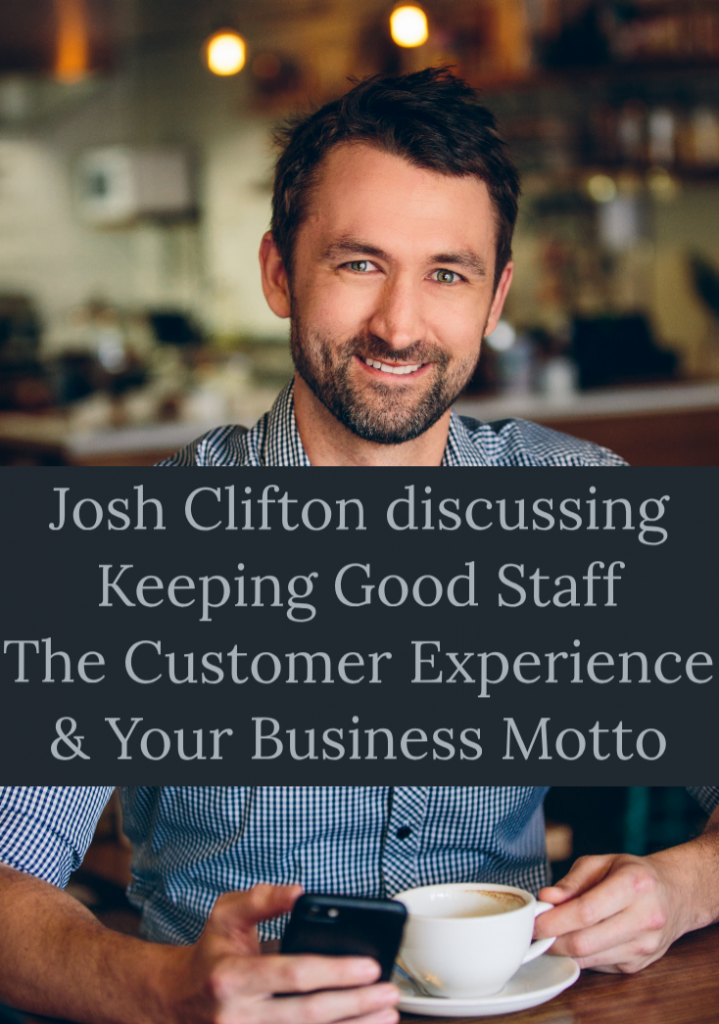
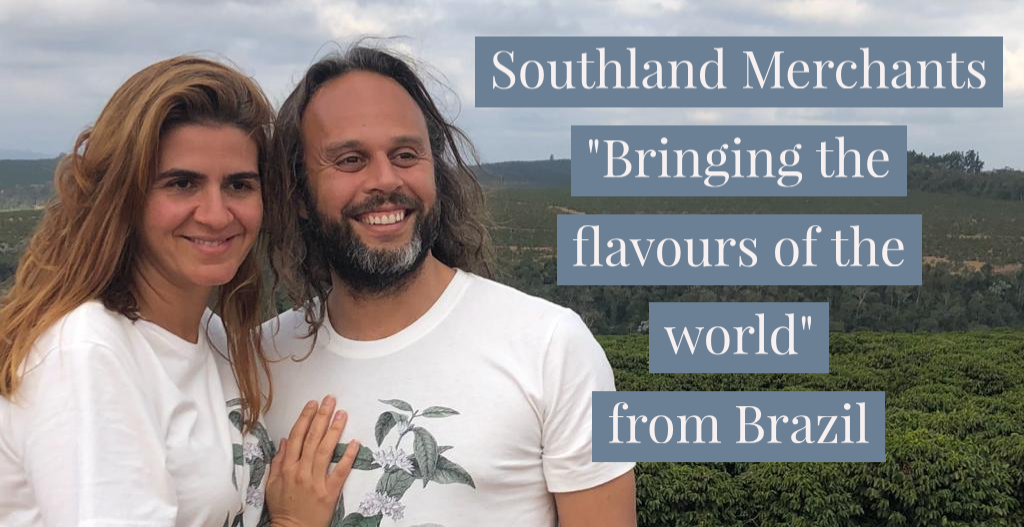
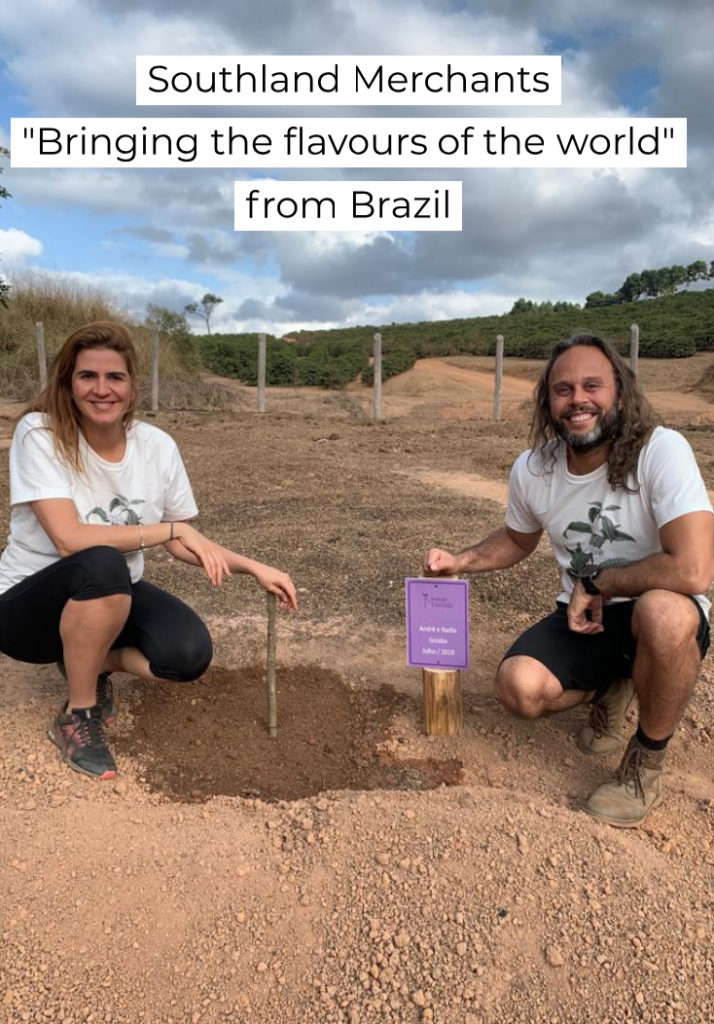
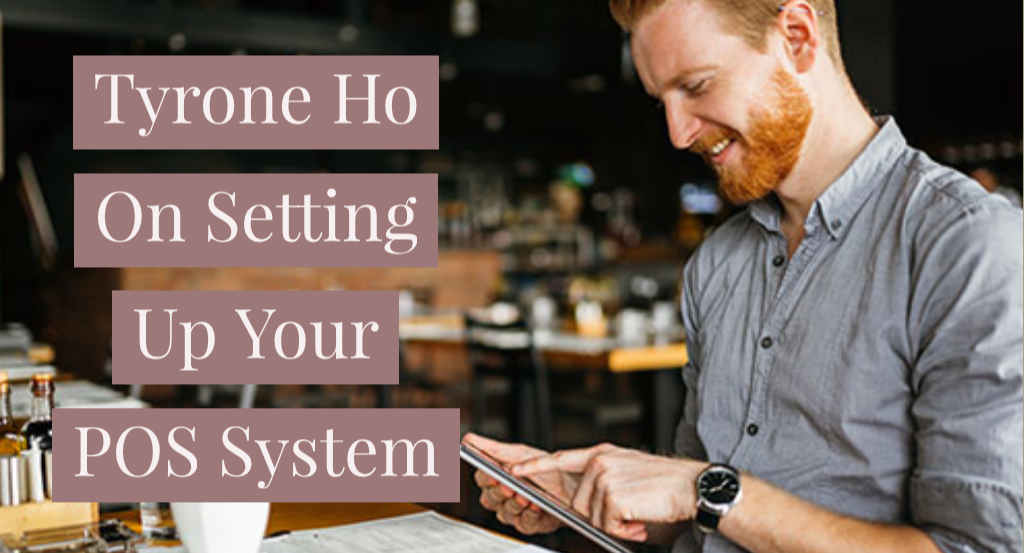
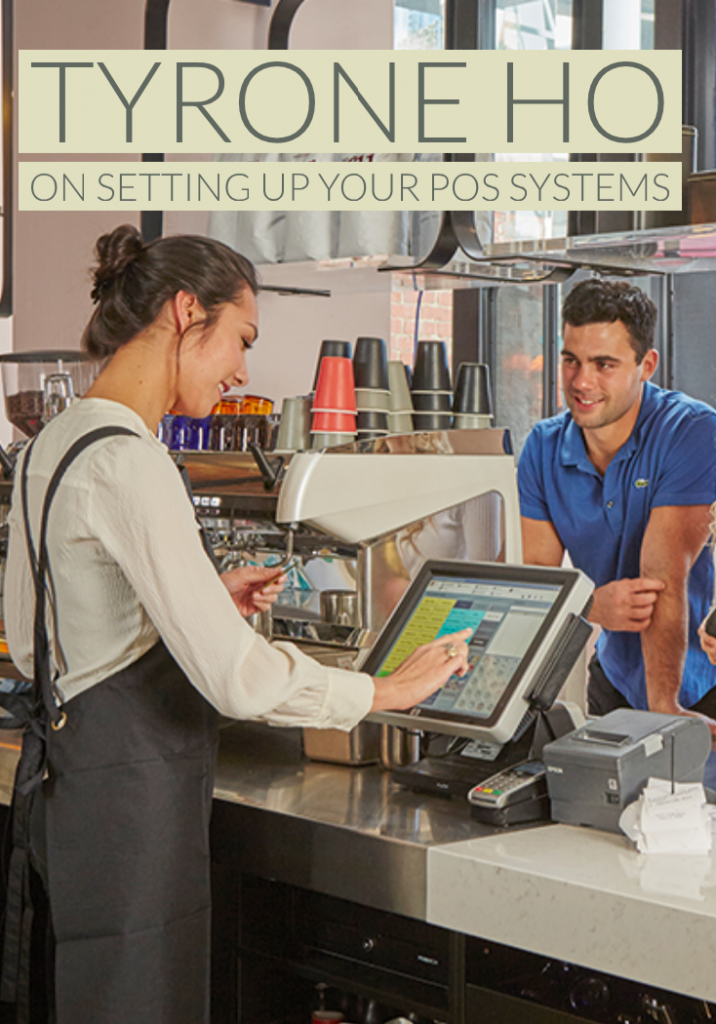
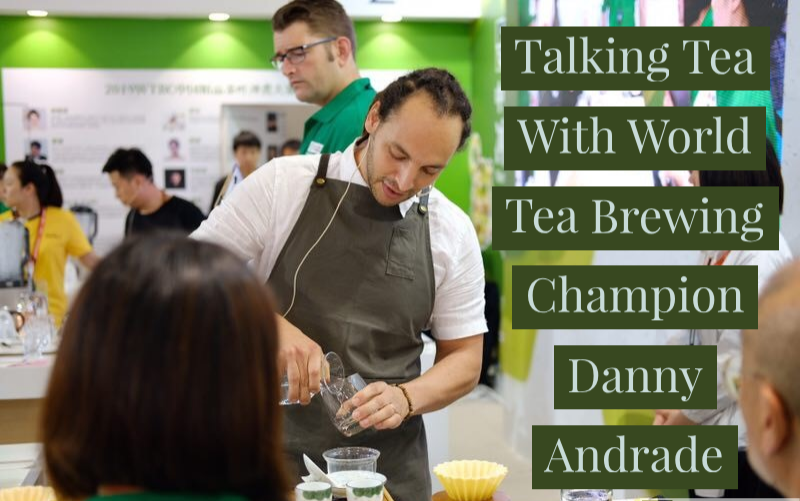
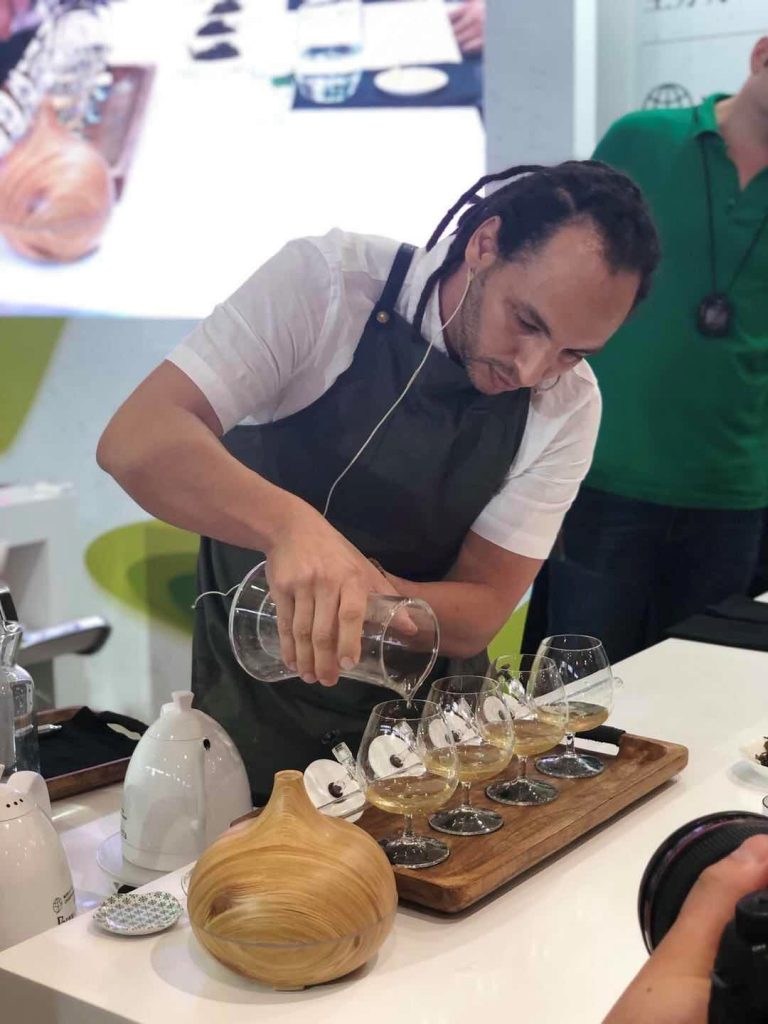
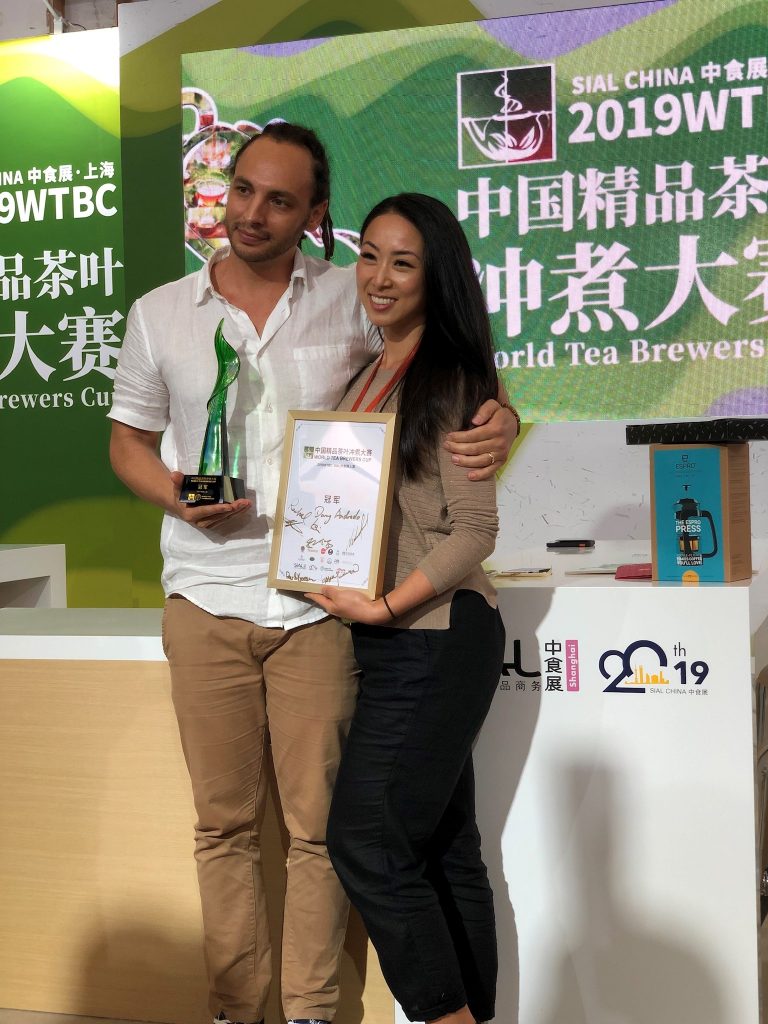

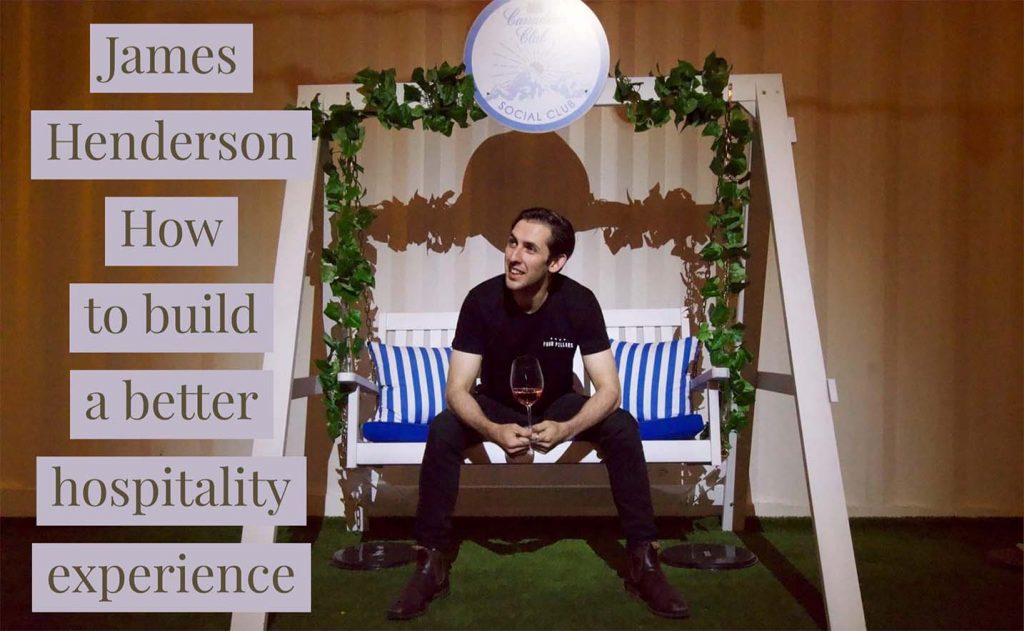
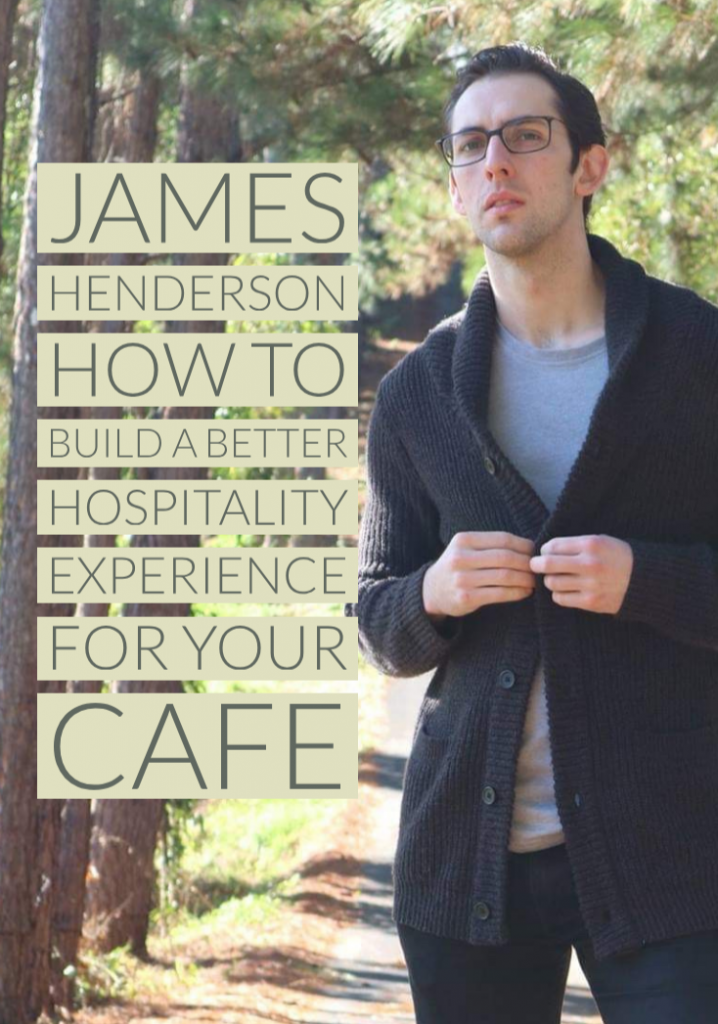
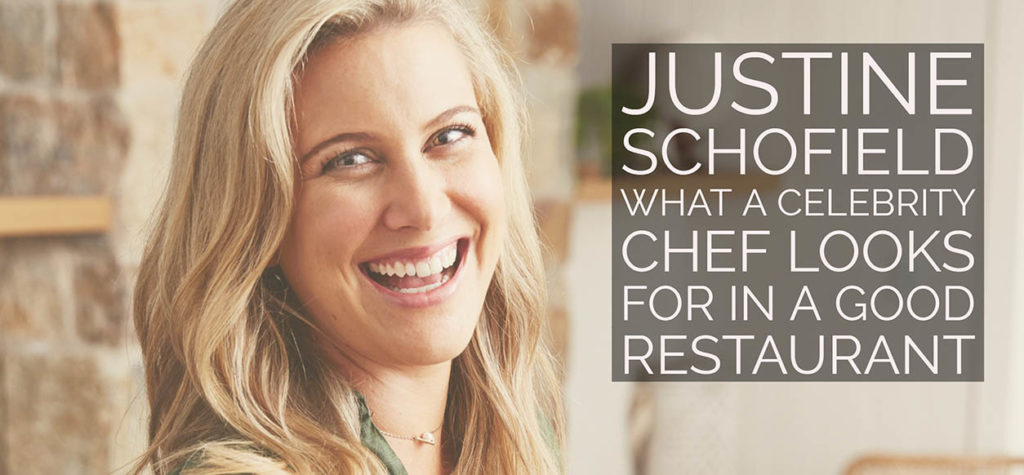
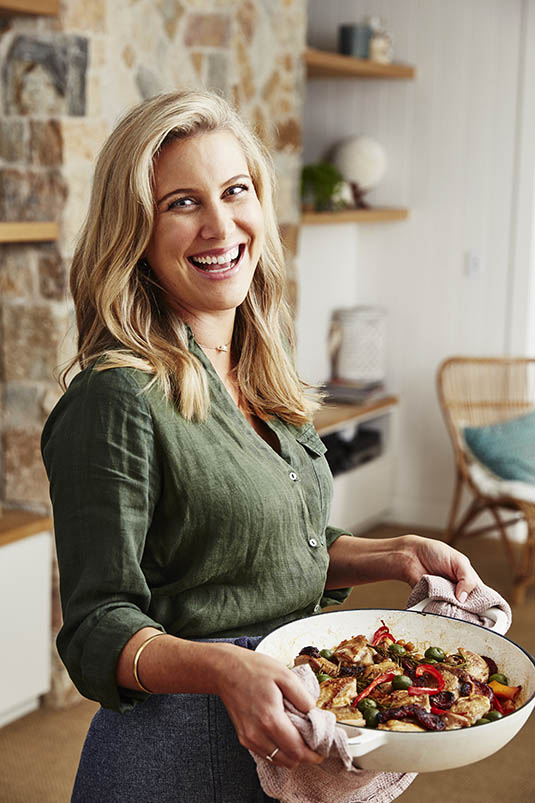
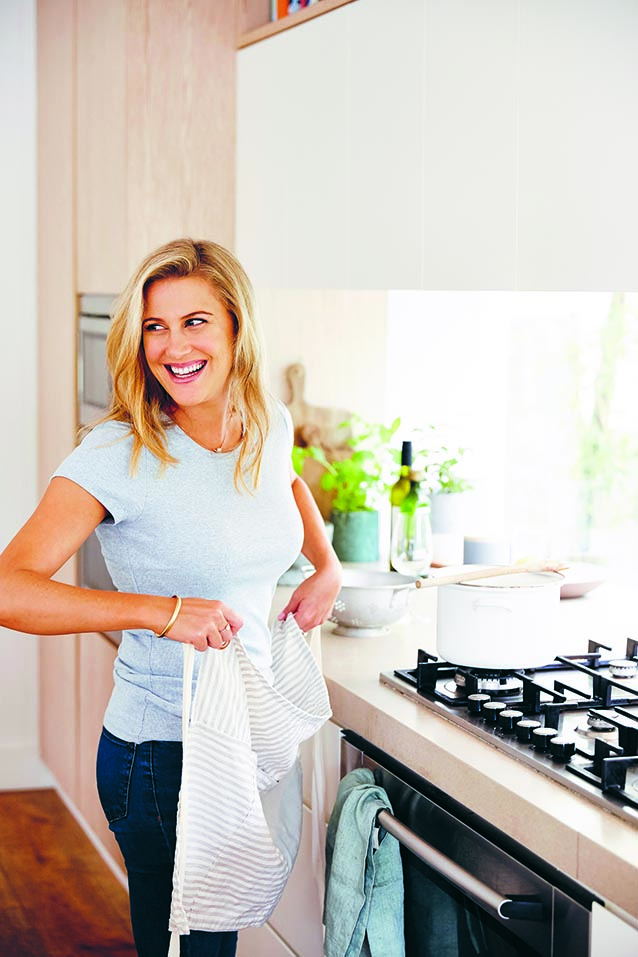

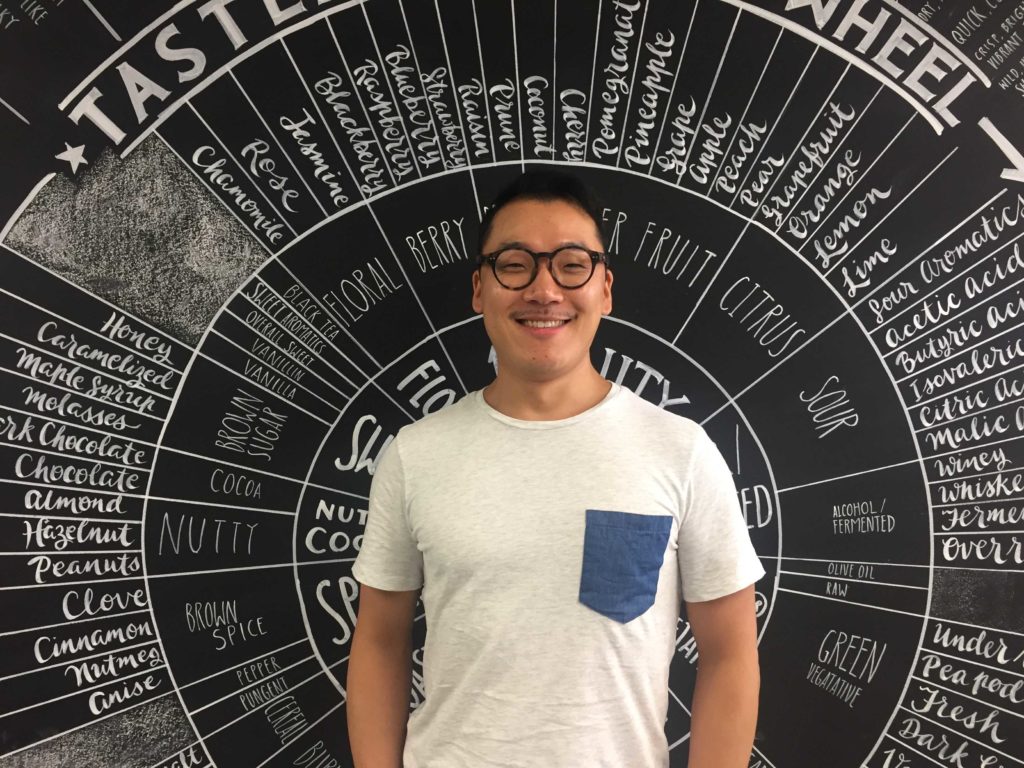
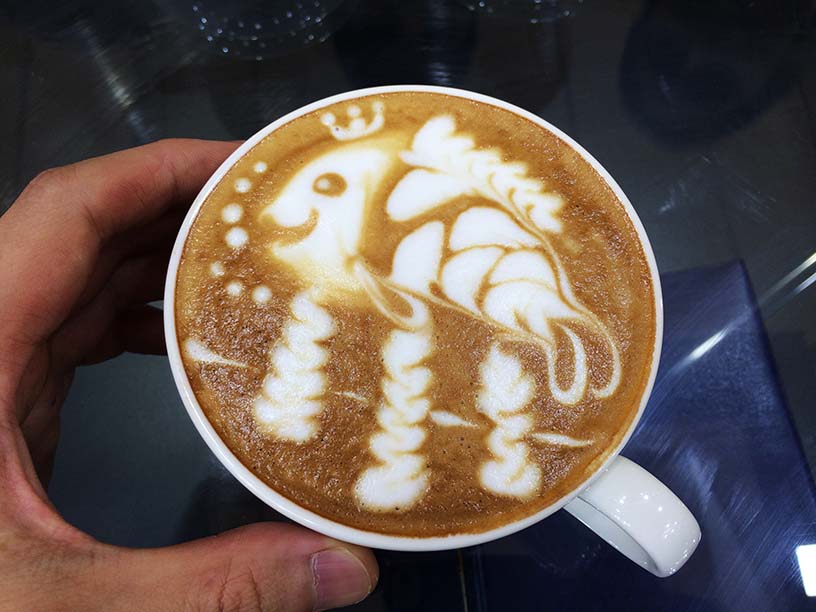
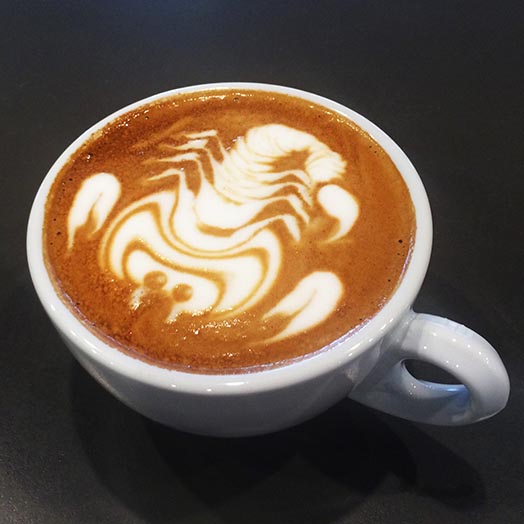

 Hospitality Academy
Hospitality Academy
 Hospitality Incorrect
Hospitality Incorrect
 Behind The Brew Coffee Podcast
Behind The Brew Coffee Podcast
 Why Hospitality
Why Hospitality
 Hospitality Design: What I've Learned
Hospitality Design: What I've Learned
 Profitable Hospitality Podcast
Profitable Hospitality Podcast